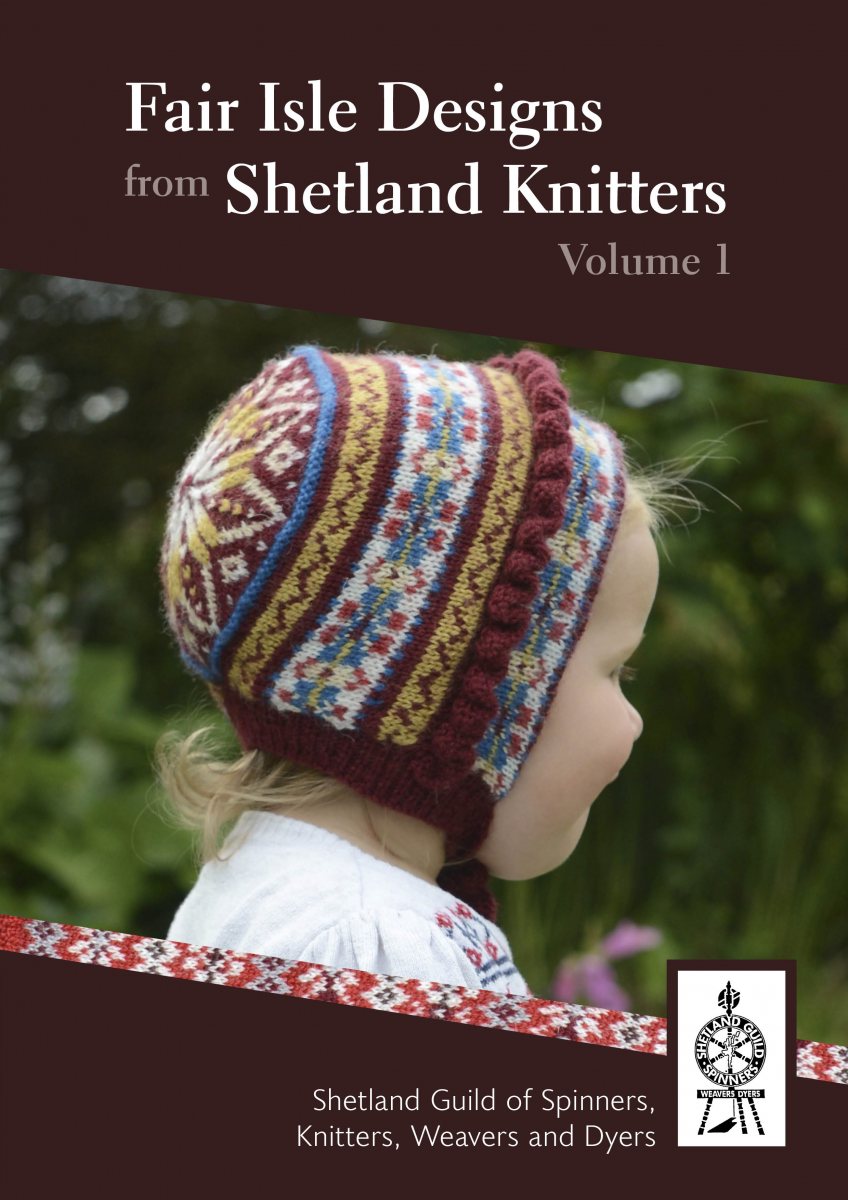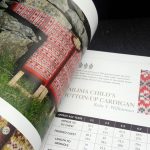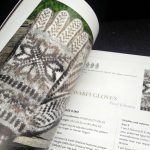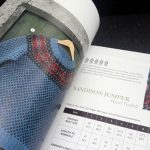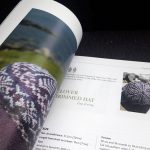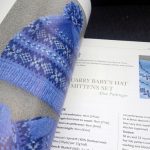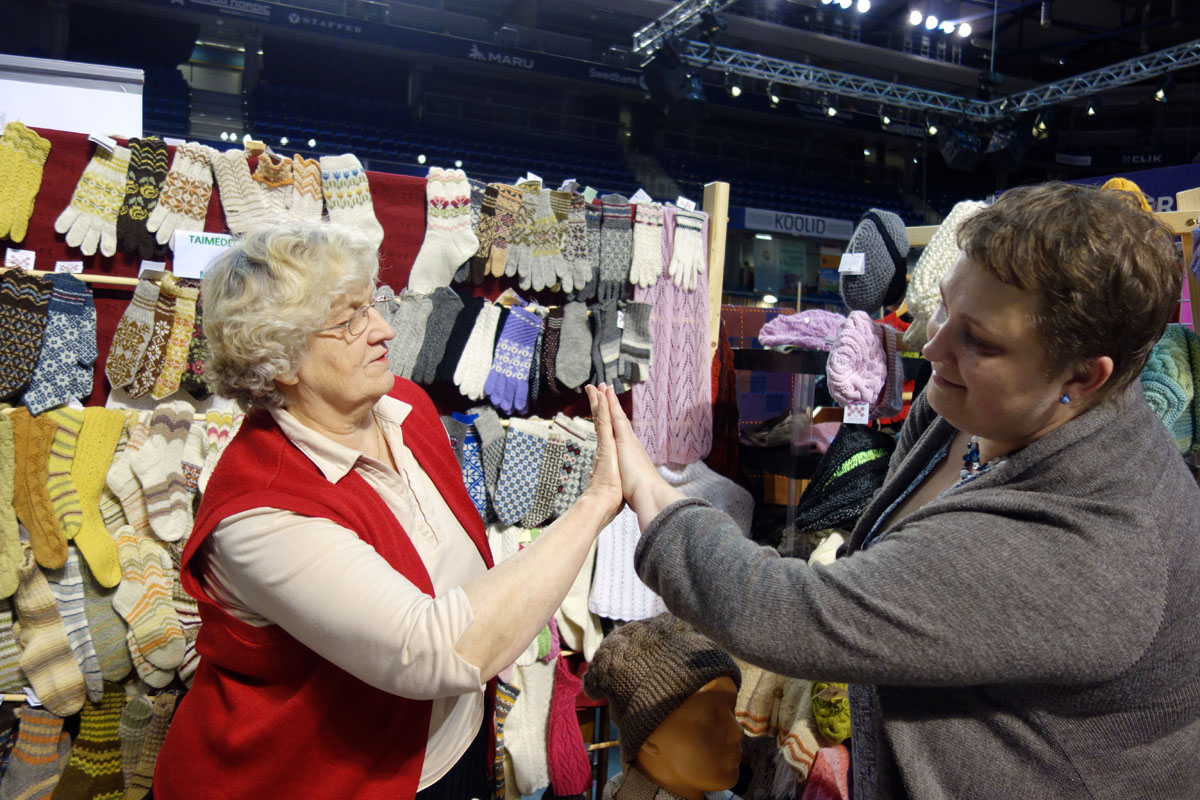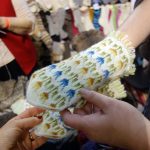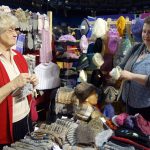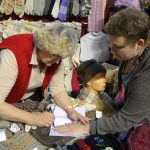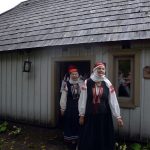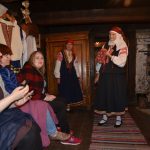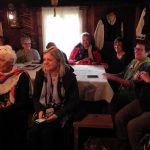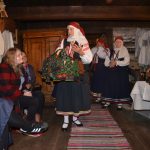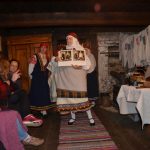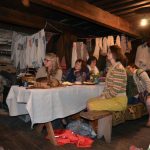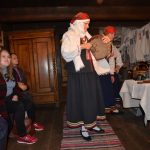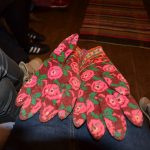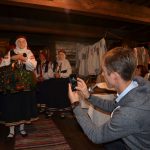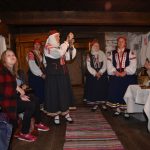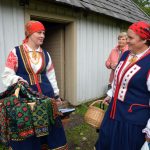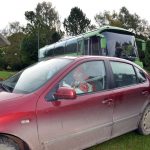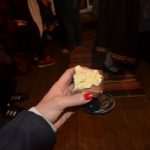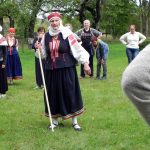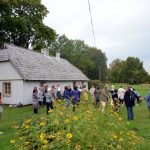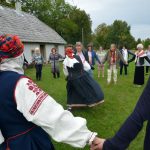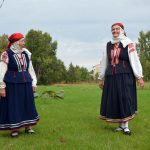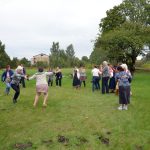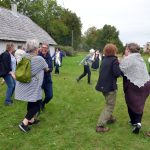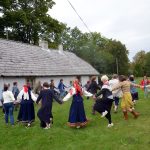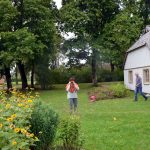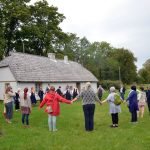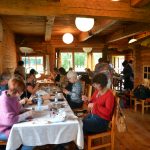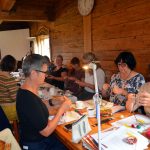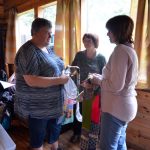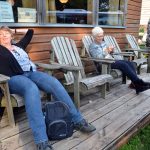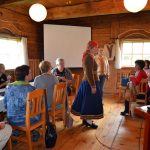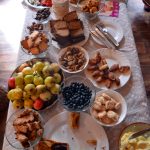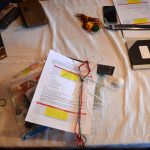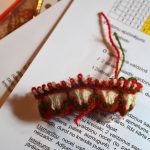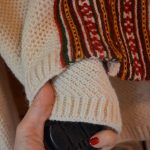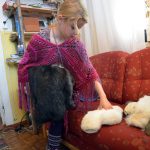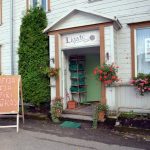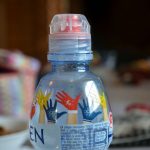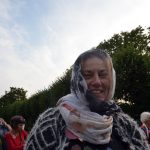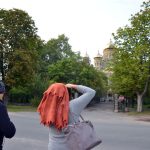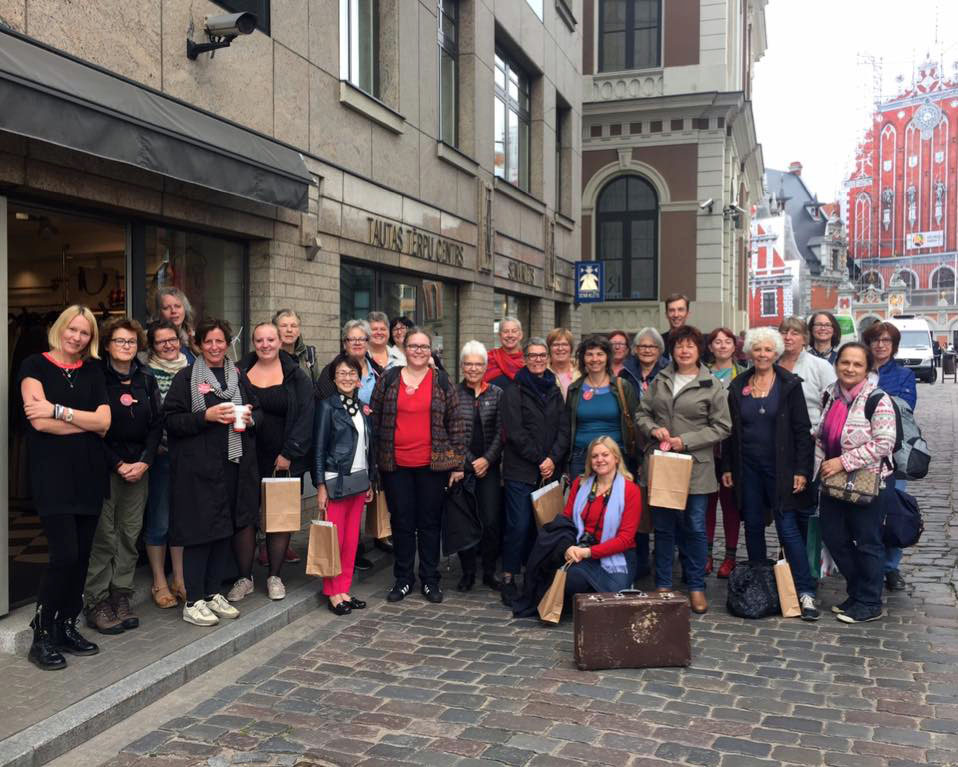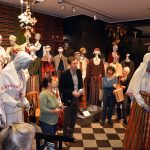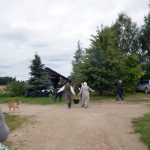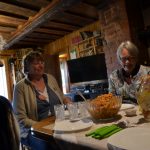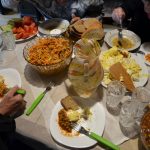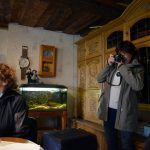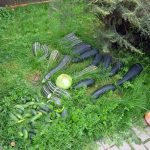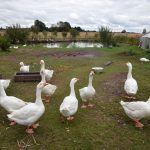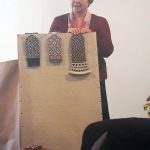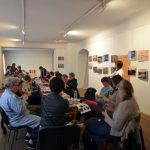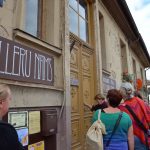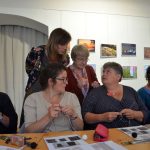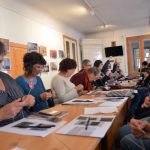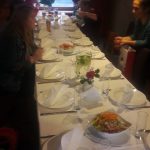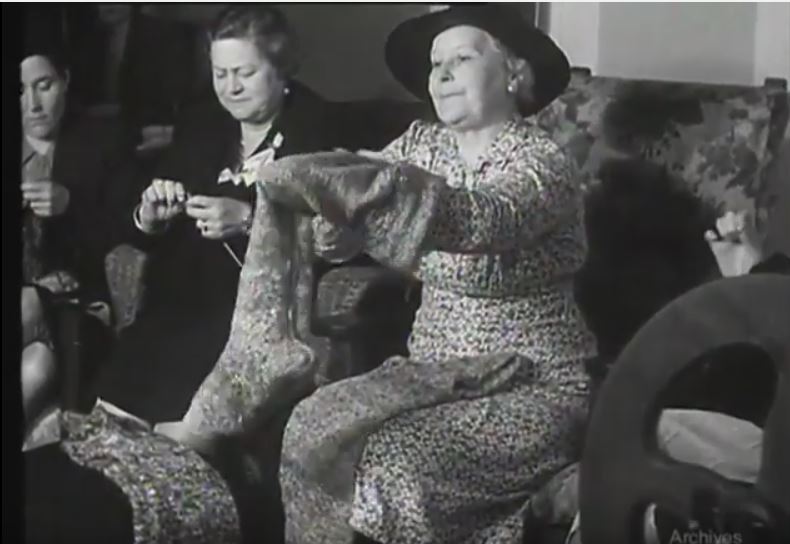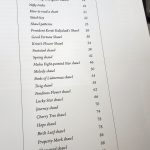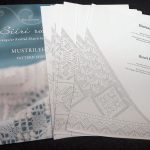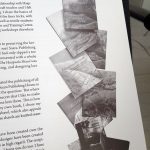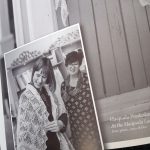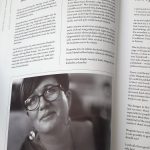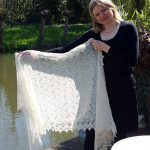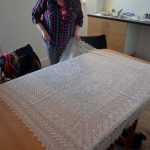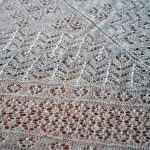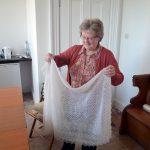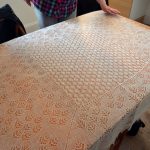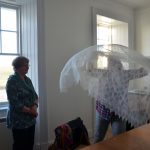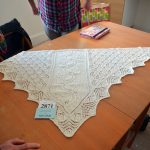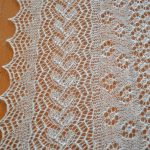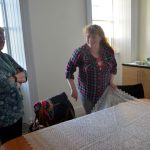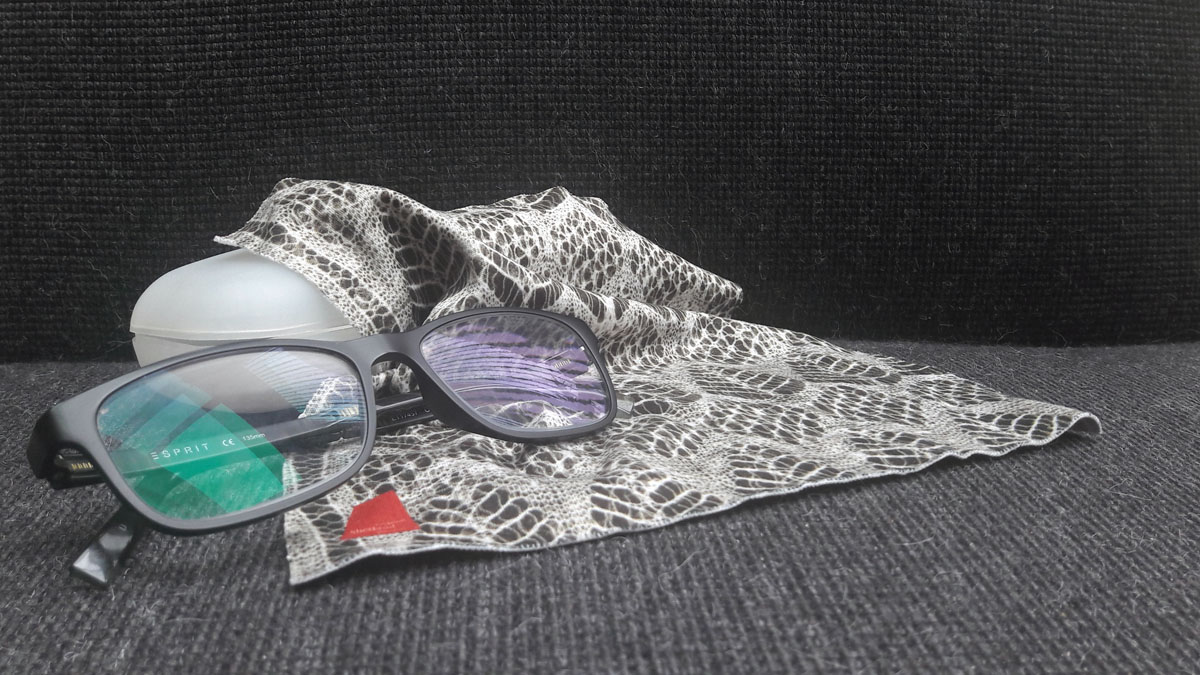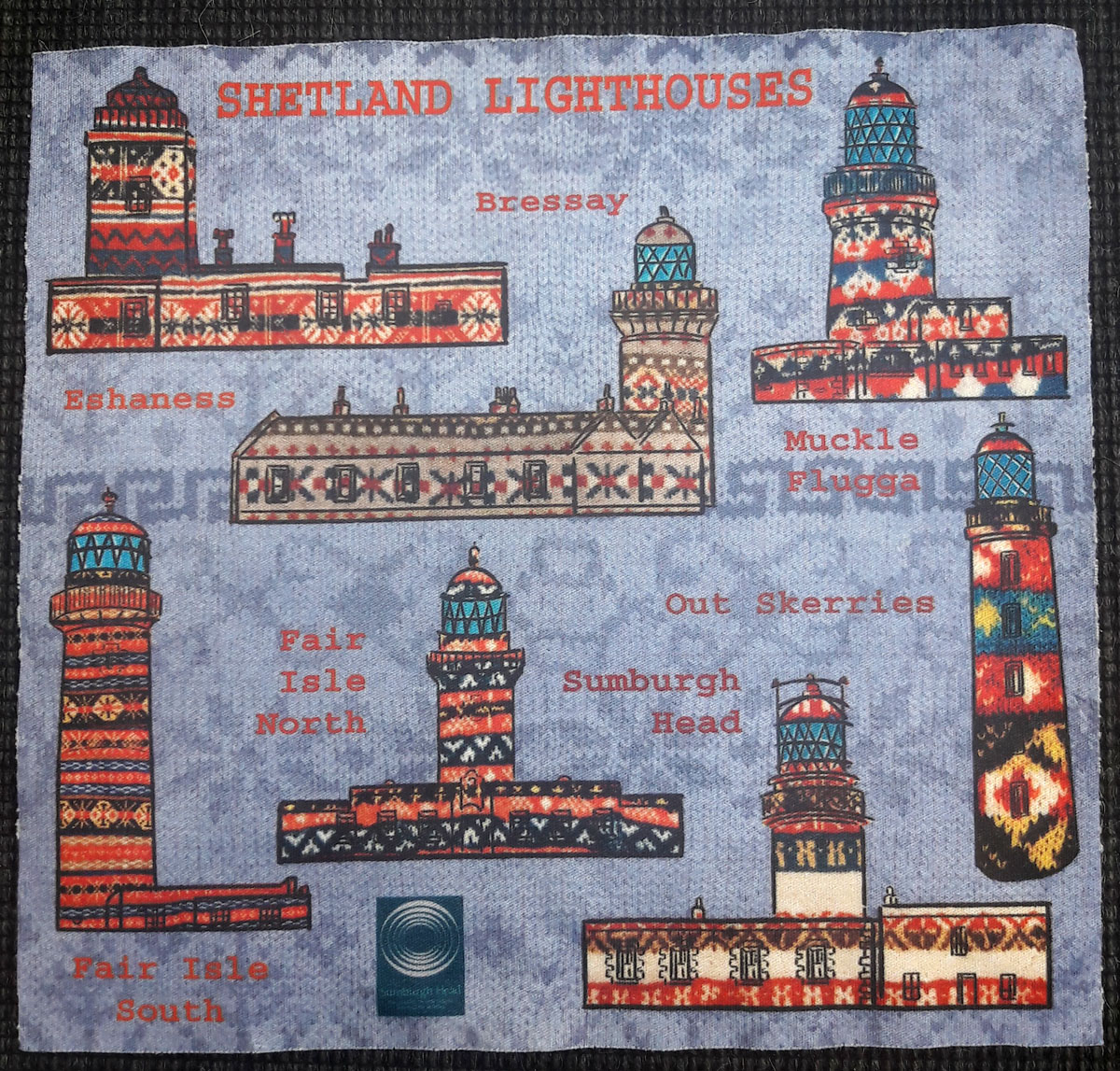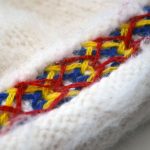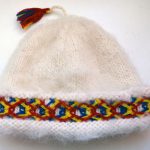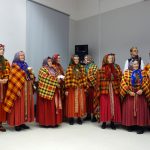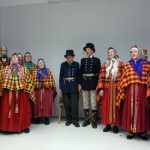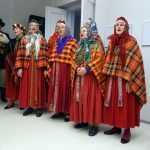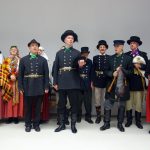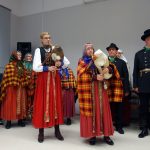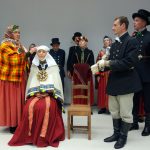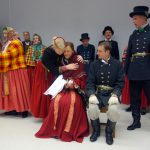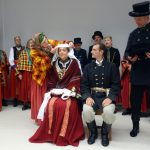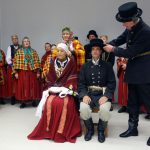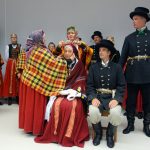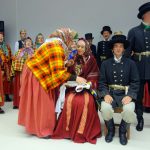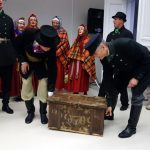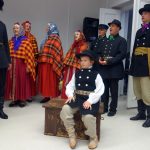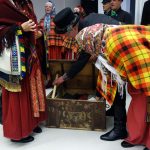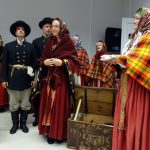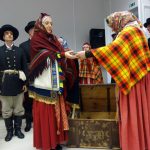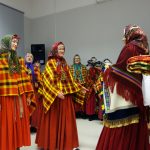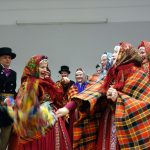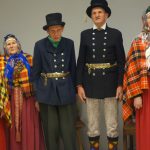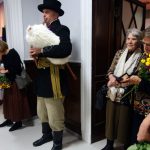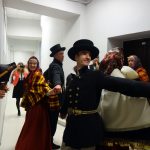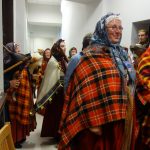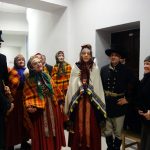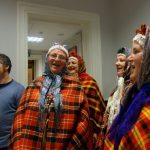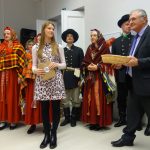October 9th, 2018
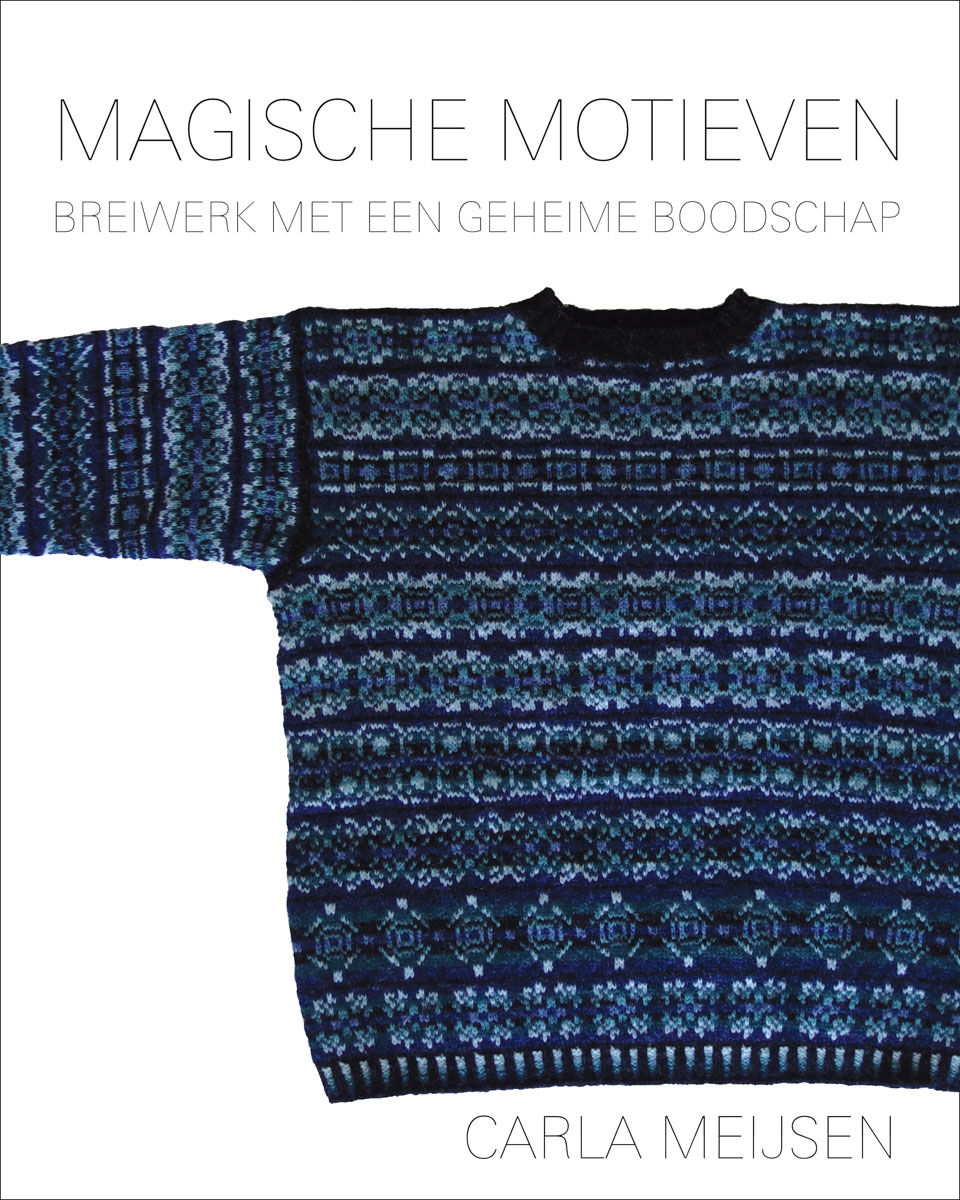
Magische Motieven – Breiwerk met een Geheime Boodschap door Carla Meijsen
Magische Motieven zijn een rekenkundige ontwerpmethode uit Letland voor het maken van geometrische motieven met behulp van magische en Vedische vierkanten. De vele mogelijkheden tot variatie bieden een goed uitgangspunt om creatief te zijn. Nóg leuker wordt het als je de motieven combineert met andere coderingen zoals morse en braille waarmee je boodschappen kan verstoppen in breiwerk.
Moeilijk is het leren maken van Magische Motieven zeker niet. Ervaar zelf hoe leuk het is om geheime boodschappen te verwerken in je breiwerk en een persoonlijk tintje te geven aan al je handwerk. Je kan meteen aan de slag met de breipatronen waarin je de motieven die je zelf maakt, kan opnemen als geheime boodschap die diepere betekenis geeft aan je breiwerk.
Laat je verrassen en inspireren door deze vernieuwende ontwikkeling in de breiwereld en beleef de magie van de Magische Motieven!
Praktische informatie
Boektitel: Magische Motieven – Breiwerk met een Geheime Boodschap
Auteur: Carla Meijsen
Publicatiedatum: 19 oktober 2018 tijdens de Breidagen in Zwolle
Taal: Nederlands (ook beschikbaar in het Engels: Magic Motifs)
Uitvoering: zachte omslag – 120 pagina’s
Afmetingen: 21 * 26 cm
ISBN/EAN: 978-90-817955-2-4
Prijs: € 24,50
Voor meer informatie kunt u contact opnemen met:
Carla Meijsen – The Dutch Knitters
Site: www.thedutchknitters.nl
Email: info@thedutchknitters.nl
Tel: 0031 6 51791747
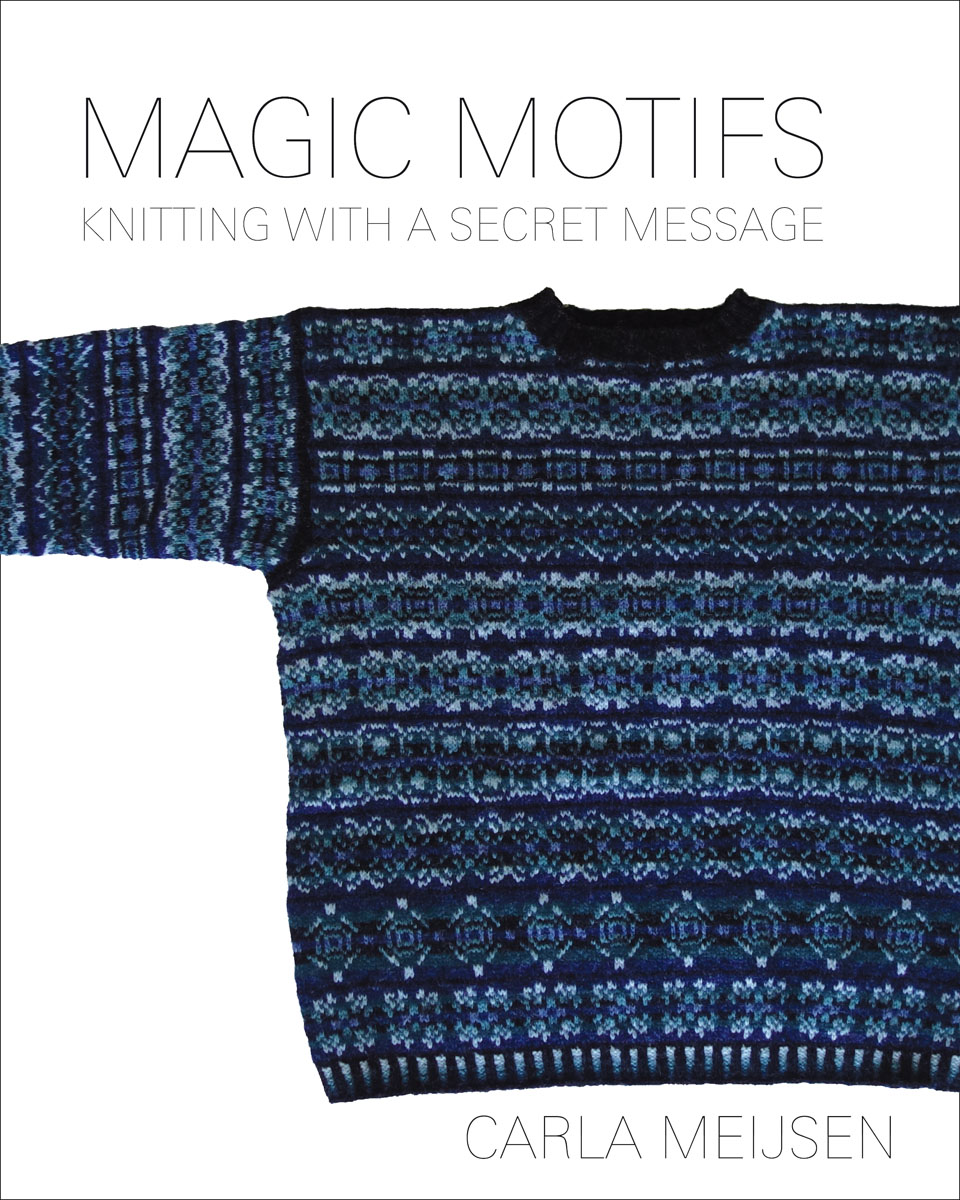
Magic Motifs – Knitting with a Secret Message by Carla Meijsen
Magic Motifs are based on a Latvian knitting technique, which uses mathematical principles (magic and Vedic squares) to generate stunning geometric patterns. The large scope for variation also provides an excellent springboard for your own creativity. The real fun starts when these motifs are combined with other systems like Morse code and Braille, allowing you to include personal, coded messages in your knitting.
Learning to generate Magic Motifs is easy. Discover for yourself how to knit up secret messages and add a personal touch to everything you make. Get started straight away: pick a pattern, and include one of your own motifs to give a deeper meaning to your knitting.
Be amazed and inspired by this new direction in knitting design, and experience the magic of Magic Motifs!
Practical Information
Book title: Magic Motifs – Knitting with a Secret Message
Author: Carla Meijsen
Publication Date: 19 October 2018 during the Breidagen in Zwolle
Language: Englisch (also available in Dutch: Magische Motieven)
Format: sott cover – 120 pages
Product dimensions: 21 * 26 cm
ISBN/EAN: 978-90-817955-3-1
Price: € 27,50
For more information, please contact:
Carla Meijsen – The Dutch Knitters
Site: www.thedutchknitters.nl
Email: info@thedutchknitters.nl
Tel: 0031 6 51791747
Posted in Books - Magazines, Great Britain - Groot Britannië, Knitting, Knitting journeys, Knitting Techniques, Latvia - Letland, Projects | No Comments »
April 10th, 2018
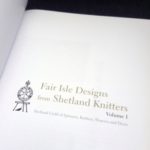 |
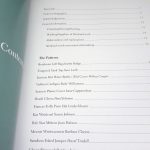 |
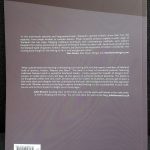 |
| Klik op afbeelding voor vergroting – Click to enlarge images |
Een paar dagen geleden viel het boek Fair Isle Designs from Shetland Knitters Part I op de mat. Een prachtig book gevuld met de favoriete patronen van de breiers van mijn geliefde Shetland. De inhoudsopgave ziet er vertrouwd uit met al die namen van mensen die ik van naam of persoonlijk ken. Bijvoorbeeld Ruby Williamson en Linda Shearer van Whalsay, Janette Budge die verleden jaar een workshop bij me deed, Barbara Cheyne en natuurlijk Hazel Tindall, wie kent haar niet? Om er maar een paar te noemen. 😉
Op de foto’s een paar voorproefjes van alle moois dat gevat is in tekst en teltekeningen. Van kindermutsjes, wanten en buideltjes tot hele spencers en vesten. Voorlopig kan je voort met dit boek, maar de Shetse dames werken hard door, want deel II komt ook al aan! Alleen naar Shetland gáán is nog leuker dan dit boek bezitten, maar als je mogelijk plannen hebt, in het boek staat ook een woordenlijst met typisch Shetse breitermen in hun dialect. Dan weet je tenminste wat ze bedoelen als ze zeggen dat je reggies moet spretten (breiwerk in ribbelsteek moet uithalen omdat er geen redden meer aan is….).
Het boek bevat meer dan honderd pagina’s en vijftien patronen en is uitgebracht door het Shetland Guild of Spinners, Knitters, Weavers and Dyers. Je kan dit prachtige boek bestellen bij de Shetland Times of bijvoorbeeld bij Amazon. Dank jullie wel, breiers van Shetland, dat jullie al dat moois met ons willen delen!
A few days ago the book Fair Isle Designs from Shetland Knitters Part I fell on the doormat. A beautiful book filled with the favorite patterns of the knitters of my beloved Shetland. The table of contents looks familiar with all those names of people I know by name or personally. For example Ruby Williamson and Linda Shearer from Whalsay, Janette Budge who followed a workshop by me last year, Barbara Cheyne and of course Hazel Tindall, who does not know her? Just to name a few. 😉
On the pictures a few previews of all the beautiful things that are contained in text and charts. From children’s hats, mittens and pouches to complete spencers and cardigans. For the time being you can knit from the patterns in this book, but the knitters from Shetland continue to work hard, because part II is already in the making! Only going to Shetland is even more fun than owning this book, but if you have any plans, the book also contains a glossary with typical Shetland knit terms in their dialect. Then at least you know what they mean when they say that you have to spret your reggies (rip your knitting in garter stitch because it really can’t be saved….).
The book contains more than one hundred pages and fifteen patterns and was released by the Shetland Guild of Spinners, Knitters, Weavers and Dyers. You can order this beautiful book at the Shetland Times or, for example, at Amazon. Thank you, knitters from Shetland, that you want to share all those gorgeous patterns with us!
Posted in Books - Magazines, Knitting, Knitting Techniques, Projects, Traditional Knitting, Vintage Knitting | No Comments »
February 11th, 2018
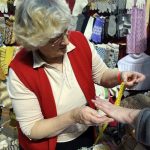 |
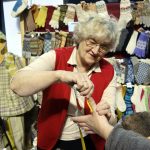 |
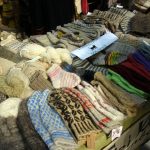 |
| Klik op afbeelding voor vergroting – Click to enlarge images |
Estlandse breiers nemen het breien op maat serieus. Op Mardilaat 2017 laat Monika haar oog vallen op superschattige wanten. Helaas, ze zijn nèt iets te klein! Maar de verkoopster is ook de breister en best bereid om voor Monika passende wanten te breien. Dan volgt er een proces met veel Estlands overleg waar ik niets van verstond, maar wat zou gaan leiden tot een paar wanten in de perfecte maat.
Het proces van het maatnemen:
- Vergelijk in hoeverre de maat van de wanten op de kraam verschilt van Monika’s maat.
- Vergelijk de maat van jouw hand met die van Monika.
- Teken de omtrek van Monika’s hand op papier.
- Meet de omvang van de hand.
- Meet de lengte van de duim.
De wanten zijn gebreid door Imbi Karu uit Türi en geverfd met plantaardige verfstoffen.
Estonian knitters take knitting to measure seriously. At Mardilaat 2017 Monika spots super cute mittens. Unfortunately, they are just too small! But the saleswoman is also the knitter and quite willing to knit suitable mittens for Monika. Then a process with much Estonian chatting that I did not understand, but what would lead to a pair of mittens in the perfect size.
The process of taking the measuments:
- Compare to what extent the size of the mittens on the stall differs from Monika’s size.
- Compare the size of your hand with that of Monika.
- Draw the outline of Monika’s hand on paper.
- Measure the size of the hand.
- Measure the length of the thumb.
The mittens are knitted by Imbi Karu from Türi and dyed with vegetable dyes.
Het resultaat / the result:
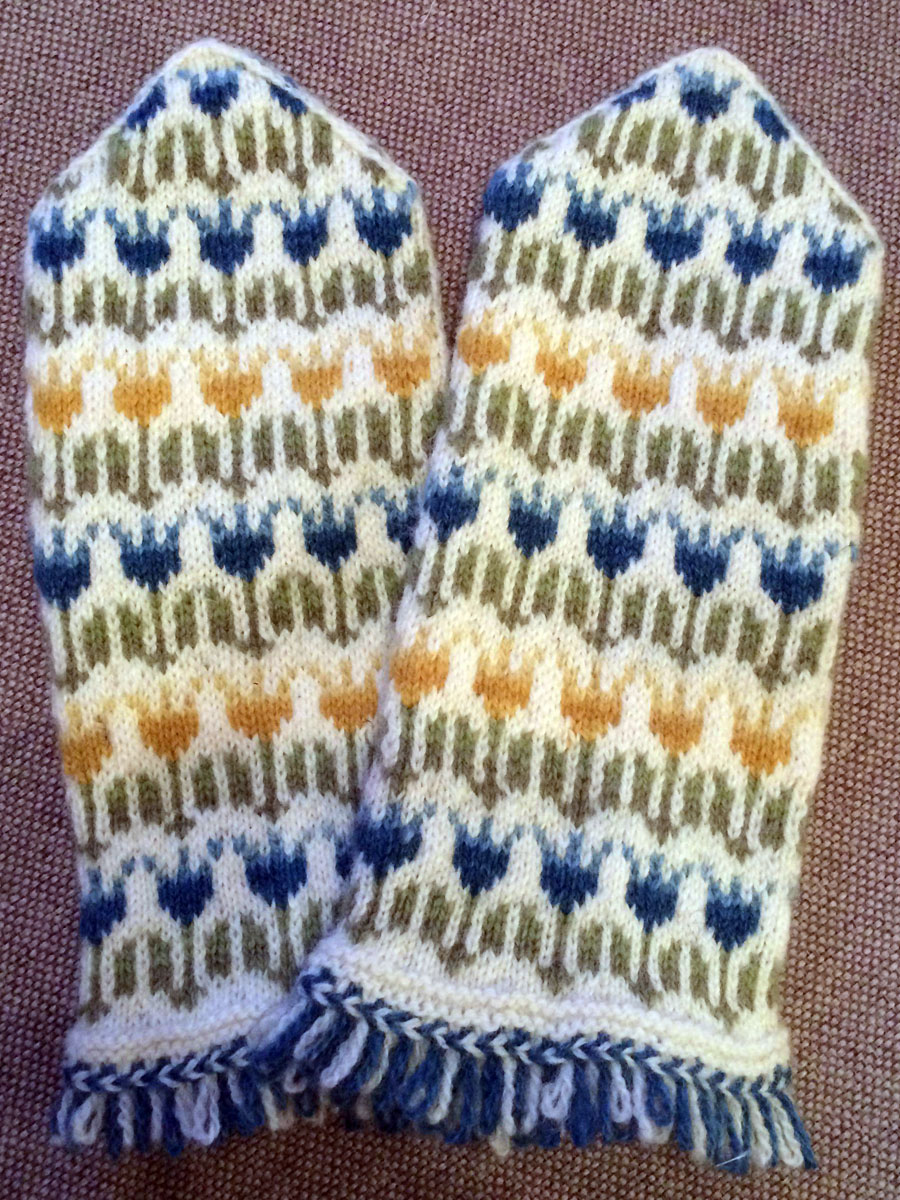
Posted in Estonia, Estonian Mittens etc, Fairs, Knitting, Knitting journeys, Knitting Techniques, Projects, Traditional Knitting, Vintage Knitting | No Comments »
January 17th, 2018
 |
 |
 |
| Klik op afbeelding voor vergroting – Click to enlarge images |
Wat een heerlijk dagje heb ik gehad met de DVD’s van Hazel Tindall (‘s werelds snelste breier) en Elizabeth Johnston (handspinner en ontwerper breiwerk) uit Shetland. Deze twee coryfeeën uit de breiwereld hebben samen twee DVD’s volgepompt met 50 tips voor breiers. Van steken opnemen tot blocken en van steeks tot kleuren kiezen voor je Fair Isle-werk, deze twee dames werken zich gezellig tuttelen door allelei tips en adviezen die ze verzamelden tijdens het geven van hun workshops. Het was alsof ze bij mij thuis op de bank zaten terwijl ik tijdens het bekijken van de DVD’s lekker zat te breien achter mijn laptopje. Het Shetse accent, de gemoedelijke manier van doen en de grondige vakkennis maken dit tot een must-have voor iedere breier. Het was een hele ruk, maar bij het vijftigste hoofdstuk zou je willen dat ze nog een paar uurtjes door zouden gaan!
What a wonderful day I had with the DVD’s of Hazel Tindall (the world’s fastest knitter) and Elizabeth Johnston (hand spinner and designer knitwear) from Shetland. These two celebrities from the knitting world together have stuffed two DVDs with 50 tips for knitters. From picking up stitches to blocking and from making steeks to choosing colours for your Fair Isle knitting, these two ladies comfortably work through all kind of tips and advice they gathered while giving their workshops. It was as if they were sitting on my couch at my home while I was knitting and watching the DVD’s on my laptop. The Shettish accent, the casual manner and the thorough professional knowledge make these DVD’s a must-have for every knitter. It took quite some time to watch all 50 chapters, but in the fiftieth chapter you would want them to continue for a few more hours!
Ga naar Hazel’s site: https://www.hazeltindall.com/dvd om de DVD’s te bestellen of download de video’s op https://vimeo.com/ondemand/50shetlandknittingtips
Go to Hazel’s site: https://www.hazeltindall.com/dvd to order the DVD’s or download the videos op https://vimeo.com/ondemand/50shetlandknittingtips
Posted in Books - Magazines, Great Britain - Groot Britannië, Knitting, Knitting journeys, Knitting Techniques, Projects, Spinning, Traditional Knitting, Vintage Knitting, Workshops | No Comments »
October 28th, 2017
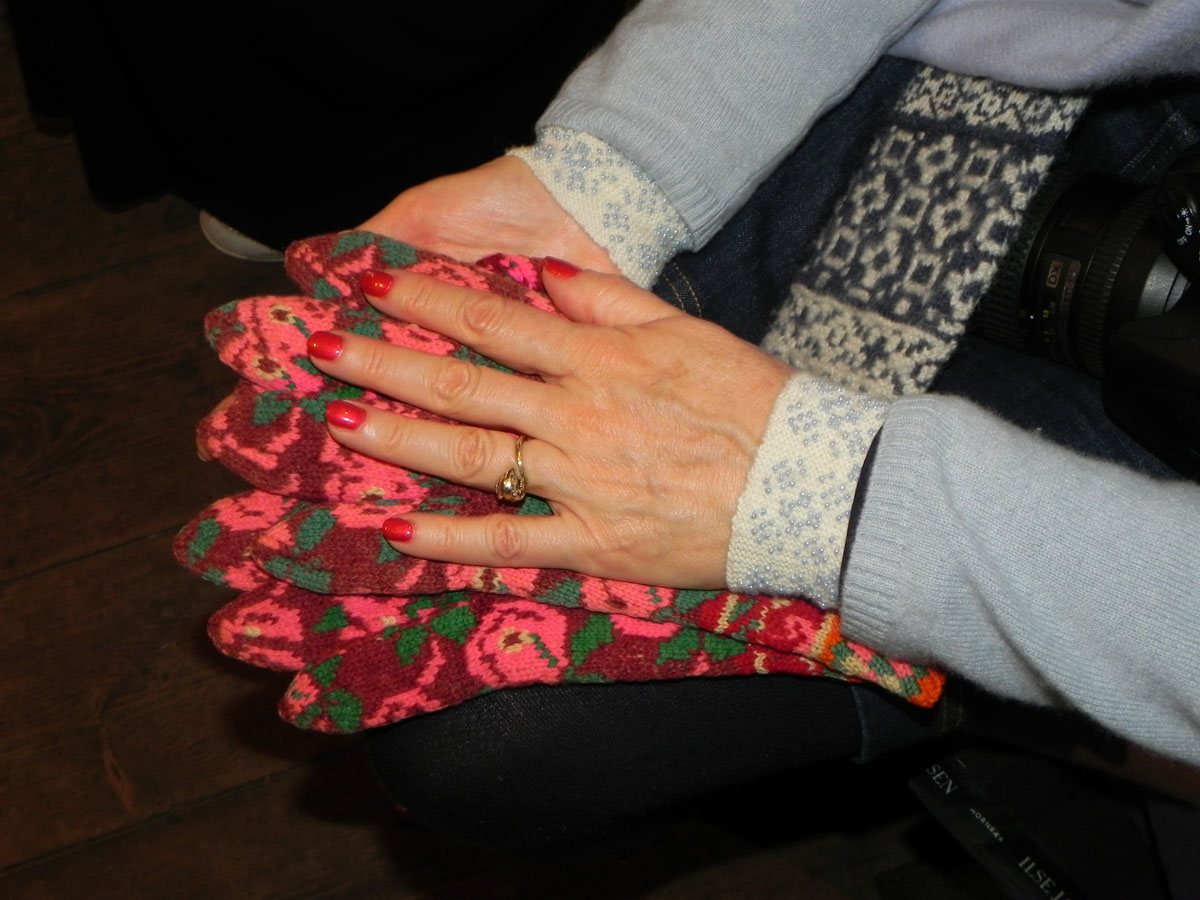
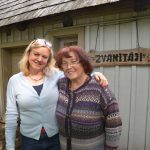 |
 |
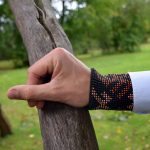 |
| Klik op afbeelding voor vergroting – Click to enlarge images |
Verleden jaar bezocht ik naar aanleiding van video’s over het dorp en het breiwerk die ik op internet had gevonden, het handwerkhuis Zvanitaji in Rucava, Letland, waar ik Sandra en de andere vrouwen uit het dorp ontmoette. Een geweldige ervaring, dus ik wilde dolgraag terug toen het dit jaar op het programma stond tijdens het de breireis die werd georganiseerd door Sena Klets. Sandra stond al op de uitkijk toen we eraan kwamen. We kregen een lekker broodje met de traditionele geslagen boter en uitleg over het handwerk, breiwerk en de kostuums van het dorp en de streek. De roze handschoenen met rozen die ik verleden keer al had gezien, spelen een belangrijke rol, omdat deze mogelijk het begin hebben gevormd van de ontwikkeling van het kleurrijke breiwerk in Rucava. Mijn handen waren maar klein in verhouding tot de handschoenen, maar mogelijk zijn ze van een man geweest, want vaak droegen de mannen breiwerk dat we nu feminine zouden noemen. Ansis showde zijn ‘mauci’ (polswarmers) met opvallend kralenwerk.
Hierna gingen we naar een ander gebouw in het dorp waar we les kregen over traditionele opzetten en de specifieke steek van de vestjes uit Rucava, gemaakt met de Honeycomb brioche steek. Best lastig omdat de Estlandse docenten niet gewend zijn aan het maken van charts, maar uiteindelijk kwamen we er toch uit met hulp van meester breier Maruta Grasmane. We deden ons iets te veel te goed aan het lekkers in de veronderstelling dat het de lunch was, maar nee, die kwam daarna nog in het handwerkhuis. Een stevige lunch ook, waarvan Ingrid niet altijd alles lekker vond, haar gezicht spreekt boekdelen… Even uitbuiken met een dansspelletje op het grasveld geleid door de energieke Sandra was dus best lekker.
In het centrum van het dorp is nog een gezellig handwerkwinkeltje, waar de jongste verkoopster van Letland mij een paar konijnenvelletjes en fantastische konijnenbontwanten verkocht. Na terugkomst in Liepaja kregen we nog een bustoer langs de bezienswaardigheden van de stad, waaronder het strand en een Russische kerk waar we, zoals dat gebruikelijk is, ons hoofd bedekten. Gelukkig had haast iedereen wel een (gebreide) shawl bij zich.
Last year, after finding some videos about the town and knitwear, I visited the Zvanitaji craft house in Rucava, Latvia, where I met Sandra and the other women from the village. A great experience, so I loved to return this year during the knitting event organised by Sena Klets. Sandra was already on the lookout when we arrived. We got a tasty sandwich with the traditional battered butter and an explanation of the handicrafts, knitwear and costumes of the village and the region. The pink gloves with roses I’ve seen in last year have played an important role, because they may have formed the beginning of the development of colorful knitwear in Rucava. My hands were small related to the gloves, but maybe they were made for a man, because often the men wore knitwear that we would now call feminine. Ansis showed his ‘mauci’ (wristwarmers) with striking beadwork.
After this we went to another building in the village where we learned about traditional cast-ons and the specific honeycomb brioche stitch of the traditional Rucava cardigans. Quite difficult to learn because Estonian teachers are not used to making charts, but eventually with the help of knitting master Maruta Grasmane we got it. We enjoyed the sweets they made for us a bit too much on the assumption that it was lunch, but no, lunch was severd later on in the craft house. A big lunch too, of which Ingrid did not always like everything, you can tell by looking at her face… So a dance game to get an appetite on the lawn led by the energetic Sandra was very nice.
In the center of the village there is another cozy craft shop, where Latvia’s youngest seller sold me some rabbit fur skins and fantastic rabbit fur mittens. After returning to Liepaja we got a bus tour along the sights of the city, including the beach and a Russian church where we covered our head as is usual Russian churches. Fortunately, almost everyone had a knitted shawl at hand.
Anneke, dank voor het gebruik van vier foto’s!
Anneke, thanks for using four photos!
 |
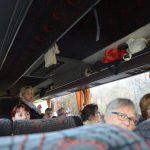 |
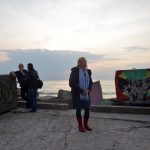 |
| Klik op afbeelding voor vergroting – Click to enlarge images |
Posted in Brioche, Knitting, Knitting journeys, Knitting Techniques, Latvia - Letland, Traditional Knitting, Uncategorized, Vintage Knitting, Workshops | No Comments »
October 9th, 2017
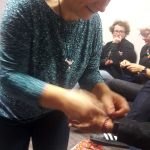 |
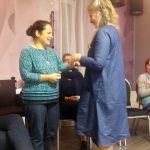 |
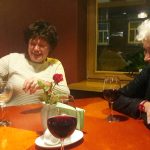 |
| Klik op afbeelding voor vergroting – Click to enlarge images |
Na een paar dagen in Riga, een stad waar ik alsmaar meer van ga houden, verzamelden alle deelnemers aan het knitting event bij Sena Klets, waar Ansis en Ziediete het knitting event officiëel voor geopend verklaarden. Wat is het toch heerlijk om in deze winkel alle mooie kostuums, wanten, sokken en ander moois te bekijken. Sena Klets speelt niet alleen een belangrijke rol in het conserveren van Letse textiel tradities, maar draagt de tradities ook over op geïnteresseerden, zoals wij. Na de inleiding en uitleg over enkele van de kostuums gingen we naar de bus die ons eerst naar Saldus bracht. Daar werden we op een boerderij door Rasma Balode ontvangen voor een traditionele lunch. In Saldus kregen we de eerste workshop over de wanten uit Saldus door Zinta Vārpiņa, die we verleden jaar al hebben ontmoet in Strazde. Ook mochten we bij Dita Zagorska een eigen Lets sieraad maken.
In Liepaja hadden we na het inchecken bij hotel Porins een welkomstdiner, waarna we werden verzocht in een andere ruimte van ons hotel in een grote kring te komen zitten. Ik keek eens om me heen en realiseerde me dat 24 van de 26 deelnemers dankzij mijn enthousiaste verhalen hier terecht waren gekomen en genoten van alle bijzondere dingen die Letland te bieden heeft. Van Ziediete kregen we een handgevlochten armbandje om. Je kan het bandje niet bij jezelf omdoen zonder hulp, dus tijdens het ontbijt de volgende ochtend werden de bandjes weer bij elkaar omgeknoopt. Na nog een borrel met Titia en Anneke M, moe en erg voldaan naar bed, op naar dag twee!
After a few days in Riga, a city that I’m going to love more and more, all participants of the knitting event gathered at Sena Klets, where Ansis and Ziediete opened the knitting event officially. It is is it nice to look all the beautiful costumes, mittens, socks and other beautiful things in this shop. Sena Klets not only plays an important role in preserving Latvian textile traditions, but also carries traditions on to interested people, like us. After the introduction and explanation of some of the costumes we went to the bus that first brought us to Saldus. There we were welcomed by Rasma Balode on her farm for a traditional lunch. In Saldus we got the first workshop on Saldus mittens by Zinta Vārpiņa, who we already had met in Strazde last year. Also, we were taught how to make a personal Latvian jewel by Dita Zagorska.
In Liepaja we had a welcome dinner after checking in at Porins Hotel, after which we were asked to gather in a different area of our hotel. I looked around and realized that thanks to my enthusiastism, 24 of the 26 participants came here and enjoyed all the special things Latvia has to offer. From Ziediete we got a hand-braided bracelet. You can not put it on without help, so during breakfast the next morning the bracelets were put on to each others wrists. After a last drink with Titia and Anneke M, tired but very satisfied, we went to bed, to dream about the second day of the program.
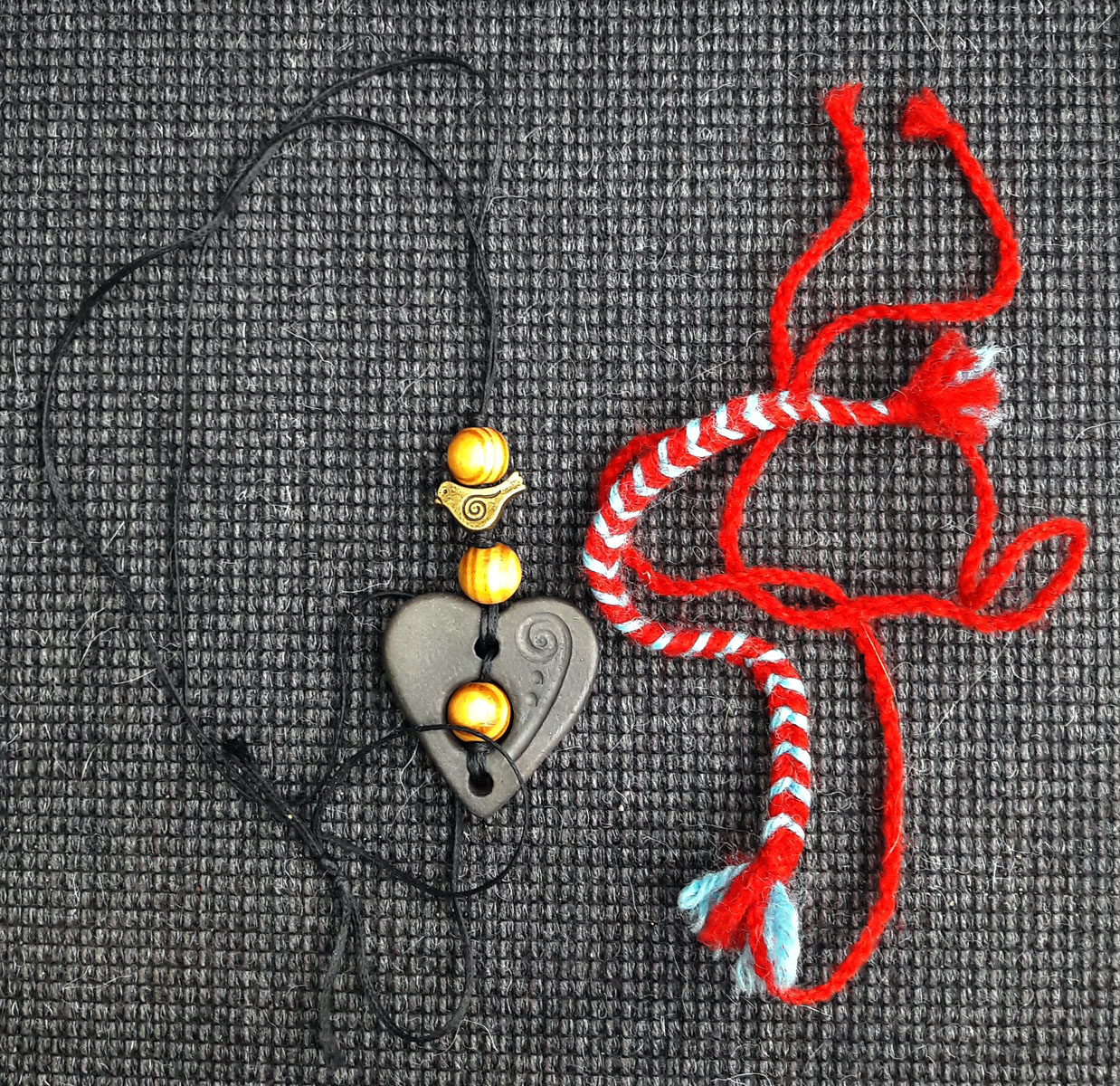
Posted in Knitting, Knitting journeys, Knitting Techniques, Latvia - Letland, Traditional Knitting, Vintage Knitting, Workshops | No Comments »
August 8th, 2017
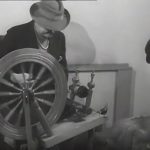 |
 |
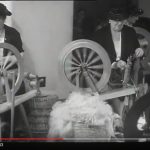 |
| Klik op afbeelding voor vergroting – Click to enlarge images |
Vrouwen in Nieuw Zeeland sponnen en breiden voor de soldaten in 1942. Daarbij hielden de meeste dames hun hoed op. Ik verwacht niet dat ze met kousenvoeten achter hun spinnenwiel zaten. Sommige hadden het zich makkelijk gemaakt en naaimachinetafels met trapplanken omgebouwd tot spinnenwielen.
Ze breiden onder meer enorme kousen voor de mannen op zee. Waarschijnlijk werden die over andere kousen aangetrokken, zodat een dikke warme laag ontstaat. Op het laatst zie je een man aan boord van een schip die met een stoere blik naar de horizon staart met een gebreide baklava.
Bekijk de video They Toil and Spin
Women in New Zealand spun and knitted for the soldiers in 1942. While doing this most ladies kept their hat on. I do not expect them to sit with their feet in cosy socks behind their spinning wheel. Some of them made it easier for them selves by converting sewing machine tables to spinning wheels.
They knitted enormous stockings for the men at sea. These were probably put on over other stockings, so that a thick warm layer was formed. At the end of the video, you see a man aboard a ship that stares at the horizon with a tough look dressed in a knitted baklava.
Watch the video They Toil and Spin
Posted in Knitting, Projects, Socks, Spinning, Stash, Traditional Knitting, Uncategorized, Vintage Knitting | No Comments »
July 5th, 2017
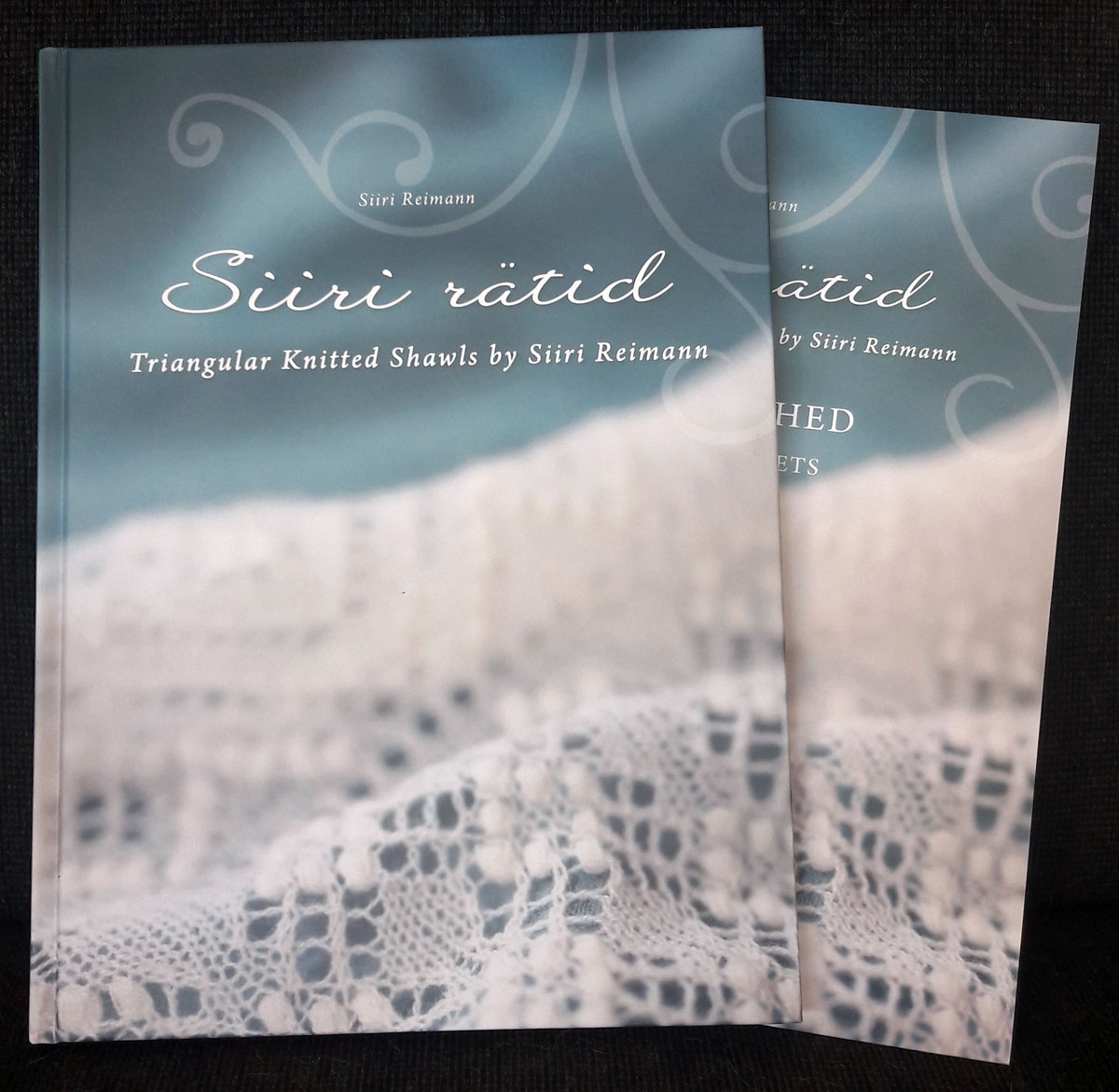
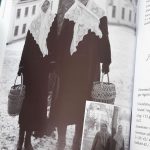 |
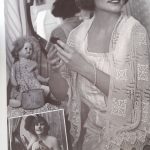 |
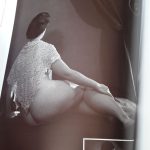 |
| Klik op afbeelding voor vergroting – Click to enlarge images |
Er is weer een juweeltje van een kantbreiboek uit. Uitgeverij Saara is enkele jaren geleden al begonnen met het publiceren van een prachtige serie boeken over Haapsalu kantbreien. Verleden maand kwam er alweer eentje uit, dit keer met ontwerpen van Siiri Reimann. Het boek bevat de algemene uitleg over hoe je een Haapsalu shawl breit en 21 patronen van driehoekige shawls. Alles in het Ests en gelukkig ook in het Engels. De teltekeningen zijn uitgetekend op aparte patroonvellen die je er in een apart mapje bij krijgt. Heerlijk, wat de grotere vellen met de teltekeningen geven veel meer overzicht dan kleine teltekeningetjes in het boek zelf. En dan het grappigste van het boek,… de fotografie! Modellen zijn in de poses en ambiance van modellen op foto’s uit de vorige eeuw geplaatst met hun shawls over de schouders. Sfeervolle plaatjes, van stoere vrouwen op de markt met dikke winterjassen tot dametjes in hun boudoir. Maar ook de shawl van de first lady Kersti Kaljulaid kreeg een plaatsje in het boek. Is het niet hoog tijd om voor Maxima iets te gaan breien?
Bij de Afstap in Amsterdam kan je het boek kopen voor € 37,50.
There is another lace knitting book published and I can assure you, it is a real gem. Saara Publisher House started publishing a beautiful series of books some years ago on Haapsalu lace shawls. Last month there was another one published, this time with Siiri Reimann’s designs. The book contains the general explanation of how to knit a Haapsalu shawl and 21 patterns of triangular shawls. Everything in Estonian and fortunately also in English. The charts are printed on separate pattern sheets that you find in a separate folder when you buy the book. That is great, as the larger sheets with the charts give much more overview than small charts in books. And then the funniest aspect of the book, … the photography! Models are placed in the poses and ambiance of models on photos of the last century with their shawls over the shoulders. Stunning pictures, from tough women on the market with thick winter coats to ladies in their boudoir. The shawl that was made for the first lady Kirsti Kaljulaid is also in the book. Is it time to knit something nice for our queen Maxima?
At the Afstap in Amsterdam you can buy the book for € 37.50.
Posted in Books - Magazines, Estonia, Estonian Lace, Knitting, Knitting journeys, Traditional Knitting, Vintage Knitting | No Comments »
June 16th, 2017
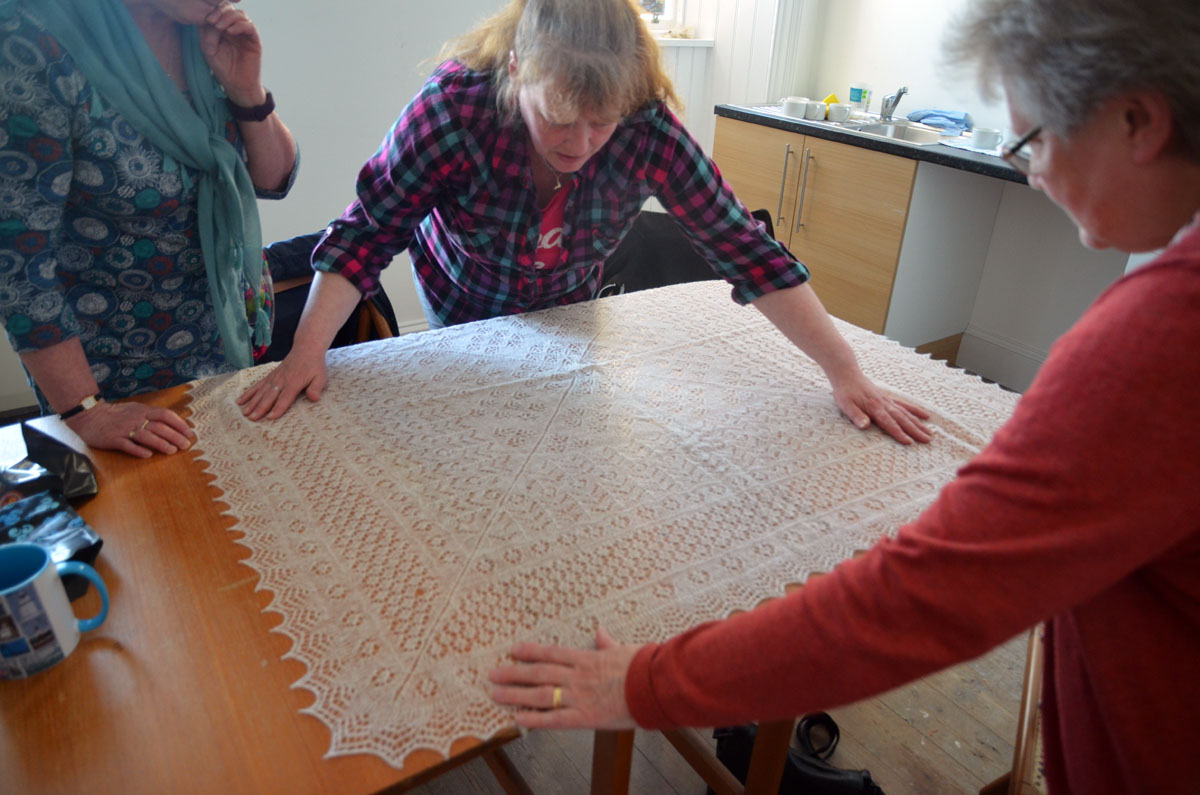
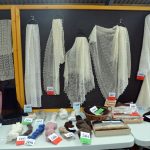 |
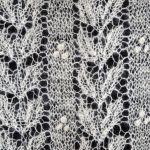 |
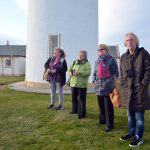 |
| Klik op afbeelding voor vergroting – Click to enlarge images |
Twee jaar geleden ontdekte ik op de show in Cunningburgh in Shetland een shawl met Estlandse nuppjes. De shawl bleek te zijn gemaakt door Stella, die ik op Facebook tegenkwam. We werden meteen vrienden.
Verleden jaar hadden we een gezellig avondje met onze vrienden Wilma (The Shetland Designer) en Irene. Dit jaar kwamen Wilma, Irene en Stella de dochter van Irene, op visite bij ons in de vuurtoren op Bressay. In het atelier dronken we koffie met koekjes en praatten we heerlijk bij, ook over breien. Stella kende ik al van Facebook, maar het is zoveel leuker om elkaar in het echt te ontmoeten. Ze had een grote boodschappentas bij zich, waar de ene na de andere kanten gebreide shawl uit kwam, die op de houten tafel werden uitgespreid. Prachtig werk, waarvan de meeste op de shows hoge prijzen hadden gewonnen. Complimenten Stella, en dank dat je ze aan ons wilde laten zien!
Two years ago, on the show in Cunningburgh in Shetland, I discovered a shawl with Estonian nupps. The shawl appeared to be made by Stella, who I found on Facebook. We became friend right away.
Last year we had such a nice evening with our friends Wilma (The Shetland Designer) and Irene. This year Wilma, Irene and Stella, the daughter of Irene, came to visit us in the lighthouse on Bressay. In the workshop we drank coffee with cookies and we chatted about all kind of things, also knitting. I already knew Stella from Facebook, but it’s so much more fun to really meet each other. She brought a big shopping bag, where all kind of knitted shawls came out, which were spread out on the wooden table. Beautiful work, most of which had won high prizes on shows. Compliments Stella, and thanks for showing them to us!
Posted in Estonian Lace, Great Britain - Groot Britannië, Knitting, Knitting journeys, Knitting Techniques, Projects, Traditional Knitting, Vintage Knitting | No Comments »
April 29th, 2017
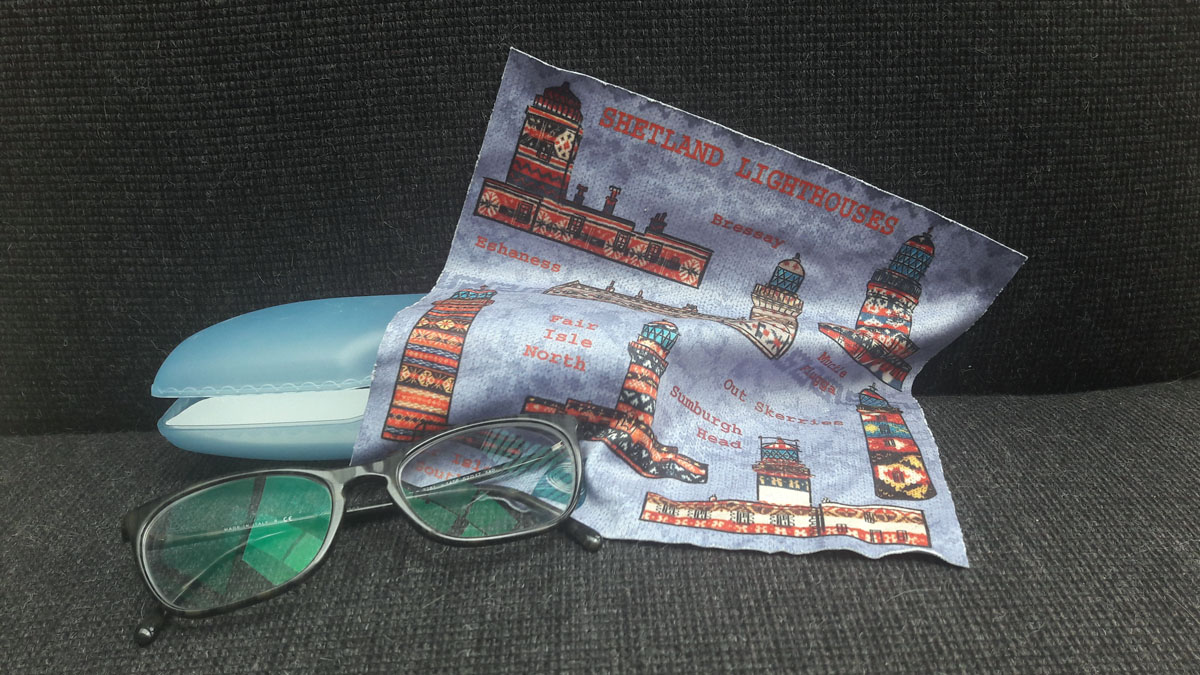
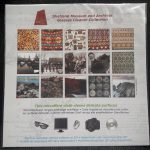 |
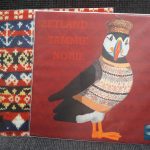 |
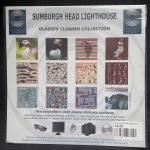 |
| Klik op afbeelding voor vergroting – Click to enlarge images |
In Shetland hebben zelfs de puffins en vuurtorens gebreide truitjes aan. De zachte poetsdoekjes waarop ze zijn afgebeeld zijn ideaal voor het schoonmaken van je bril. Ik heb er natuurlijk ook een paar. Eén met vuurtorens om iedere dag te worden herinnerd aan de prachtige architectuur van Robert Stevenson. Na deze reis heb ik in drie ervan geslapen en heb ik ze waarschijnlijk op één na (Outer Skerries) allemaal gezien. Voor mijn leesbril heb ik een toepasselijk lapje van lace (kant) breiwerk. 😉
In Shetland even the puffins and lighthouses wear knitted sweaters. The soft wipes on which they are displayed are ideal for cleaning your glasses. Of course I have some of those wipes too. One with lighthouses to be reminded every day of the beautiful architecture of Robert Stevenson. After this trip I will have I slept in three of the lighthouses and I probably saw them all except for one (Outer Skerries). For my reading glasses I have an appropriate wipe with an image of lace knitting (in Dutch the pronounciation of ‘lace’ and ‘lees’, which means ‘read’ are exactly the same ;-).
Posted in General, Great Britain - Groot Britannië, Knitting, Knitting journeys, Lace Knitting | No Comments »
February 5th, 2017
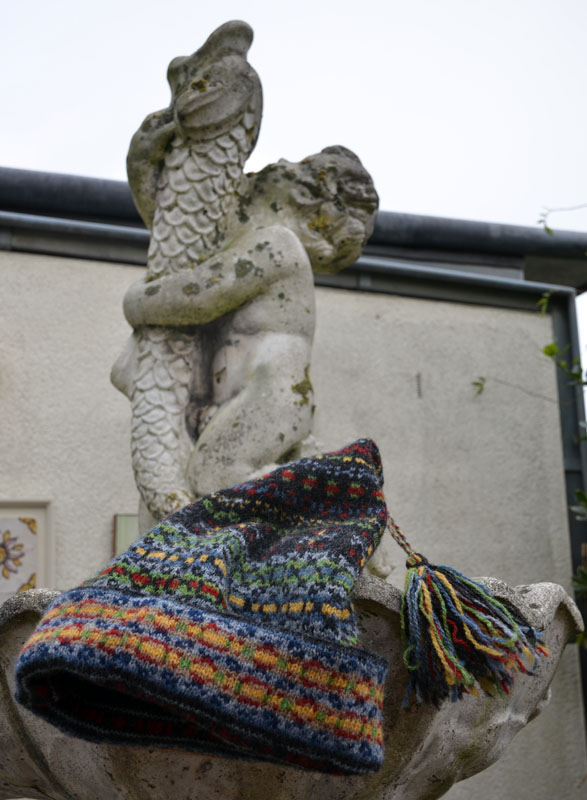
Op Fair Isle kan het in mei nog best fris zijn, dus een Fair Isle kep die je lekker warm houdt is dan een vereiste. Inmiddels heb ik mijn eerste kep klaar. Het is een dubbele wintermuts geworden, een zogenaamde worst die je eerst in elkaar vouwt en waarvan je dan de rand omslaat. Dit geeft dus vier lagen om je oren, die niet meer koud zullen worden, maar je hoort ook maar de helft. 😉
De muts is doorspekt met allerlei variaties van het woord Fair Isle. Dit woord is gebruikt om met magische en vedische vierkanten de breimotieven samen te stellen. Deze nieuwe uit Letland afkomstige en door mijn verder uitgewerkte ontwerptechniek, die ik Magic Motifs heb gedoopt, biedt veel mogelijkheden om met één gegeven tig verschillende kleurenmotiefjes te maken. Zo verstop je een geheime persoonlijke boodschap in je breiwerk, hoe leuk is dat? De muts was dan ook een feest om te bedenken en te breien.
Wie geïnteresseerd is in Magic Motifs kan een workshop volgen. Voor veel informatie en een geweldig patroon van een originele kep ontworpen door Anne Sinclair kan je gratis lid worden van de Facebook-groep.
Nog even de knitty-gritty van mijn Fair Isle kep:
- garen: Jamieson of Shetland 2-ply jumper weight
- naalden: 2,75 mm
- lengte in totaal: 72 cm
- omtrek ter hoogte van de omslag: 58 cm
- gewicht: 148 gram
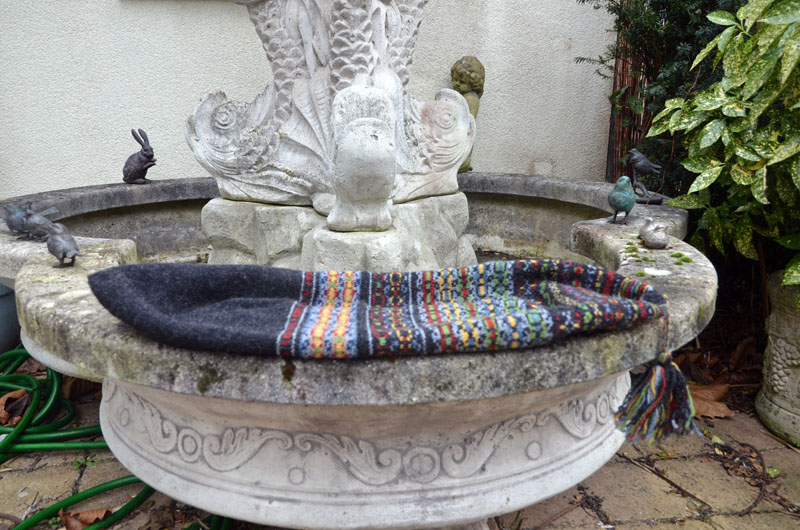
On Fair Isle it can be quite chilly in May, so a Fair Isle kep that keeps you warm is required. I already got my first kep ready. It has become a double winter kep, a so-called sausage that you fold into each other and then fold the border. So this gives four layers around your ears, so they will not be cold, but you hear only half. 😉
The hat is stuffed with all kinds of variations of the word, Fair Isle. This word is used to compose the knit motifs and vedic with magic squares. With this new design method of Latvian origin and further developed by me, that I have baptized Magic Motifs, offers many opportunities to make loads of different color motifs. This way you hide a personal hidden message in your knitwear, isn’t that nice? The hat was therefore fantastic project to design and knit.
Those interested in Magic Motifs can attend a workshop. For much information a great pattern of an original kep by Anne Sinclair you can to join the Facebook group (free).
And now the knitty-gritty of my Fair Isle kep:
- yarn: Jamieson or Shetland two-ply jumper weight
- needles: 2.75 mm
- total length: 72 cm
- circumference of the border: 58 cm
- weight: 148 grams
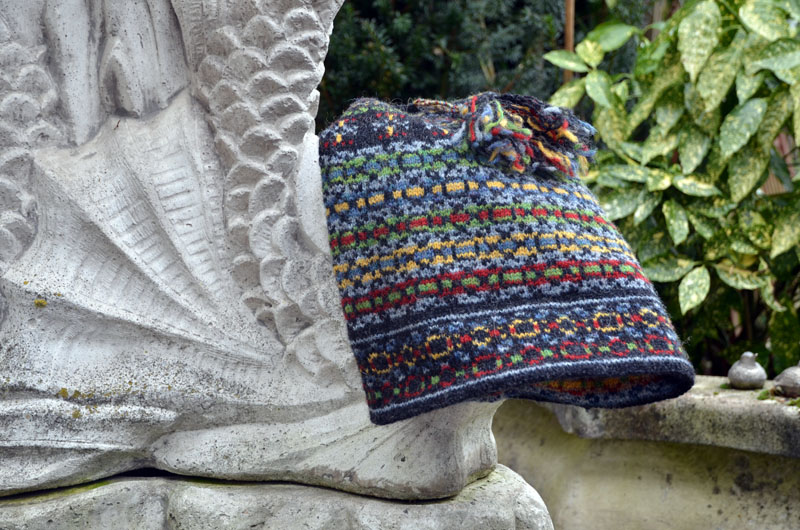
Posted in Great Britain - Groot Britannië, Knitting, Knitting journeys, Knitting Techniques, Latvia - Letland, Projects, The Dutch Knitters, Traditional Knitting, Vintage Knitting, Workshops | No Comments »
January 8th, 2017
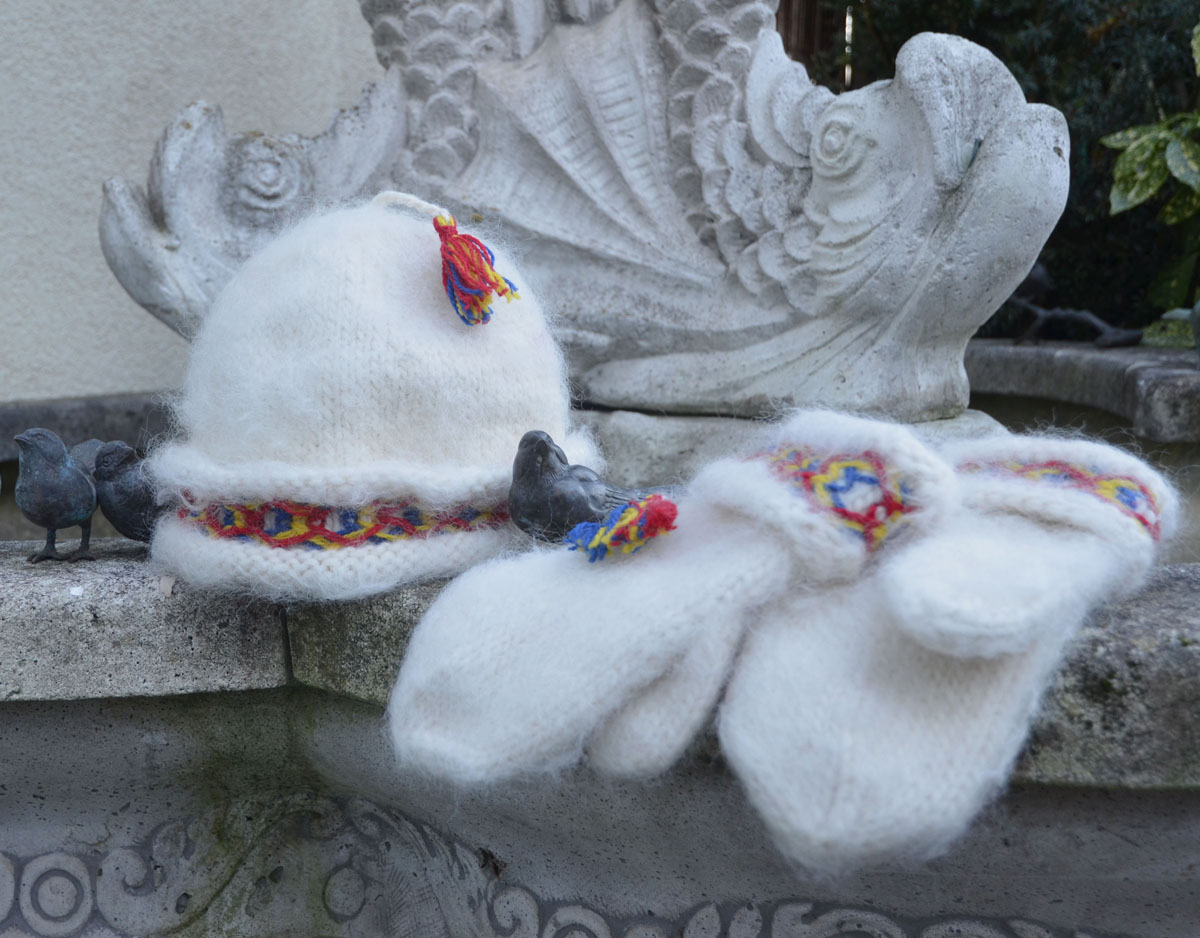
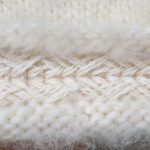 |
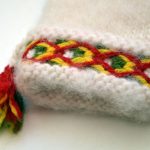 |
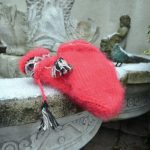 |
| Klik op afbeelding voor vergroting – Click to enlarge images |
Twee jaar geleden in Stockholm zag ik prachtige Lovikka-wanten. Deze wanten worden gebreid van dikke ongetwijnde wol, die na het breien met een kaardeborstel wordt opgeborsteld tot er een dikke warme pluislaag ontstaat. Kleurige borduursels aan de pols geven een extra vrolijk accent. Trek ze aan en het is alsof je in een warm bad stapt.
Lovikka-wanten zijn volgens de overlevering voor het eerst gebreid in 1892 door Erika Aittamaa (1866–1952) in, je raad het al, Lovikka. Dit dorpje in het hoge noorden van Zweden gaf z’n naam aan de wanten. Erika breide voor dorpsgenoten om wat geld te verdienen voor haar familie. Toen ze een opdracht voor superwarme duurzame wanten verknalde en het resultaat toen maar waste en opborstelde ontstond het typische fluffy breisel waar de Lovikka-wanten beroemd om werden. Erika verfraaide de wanten door een omgeslagen boord te maken en deze te borduren met kleurrijk garen. Zo ontstond een iconische want die je direct associeert met Zweden.
Ik vond ze direct geweldig leuk, maar als eigenwijze breier kocht ik ze niet maar maakte thuis mijn eigen variant met wat technische verbeteringen plus nog een bijpassende muts. Er zijn veel verschillende patronen, maar iedere ontwerper geeft de wanten een eigen touch door verschillen in het borduurwerk. Ik koos voor mijn eerste set voor de typische Sami-kleuren wit met rood, blauw en geel borduursel. Maar ze zijn ook leuk in andere kleuren, bv rood met grijstinten. Wit borduursel op een witte achtermgrond is stijlvol en chique. Natuurlijk mag het koordje met kwastje niet ontbreken, want dat geeft zo’n gezellig authentiek tintje. Zie je ze al in gedachten aan hun koordje voor het knapperend haardvuur hangen, terwijl buiten de sneeuw metershoog ligt, de rendieren om het chalet lopen en in de verte de wolven huilen?
Het patroon voor de wanten in maat S, M en L plus de muts in S/M en M/L in het Nederlands of Engels kan je bestellen bij The Dutch Knitters of op Ravelry.
Dank aan Mieke voor het testbreien!
Two years ago, in Stockholm, I saw beautiful Lovikka-mittens. These mittens are knitted from thick untwisted wool, which is brushed up after knitting with a cardig brush until a thick warm fluffy layer appears. Colored embroidery on the cuff give them an extra cheerful accent. Put them on and it’s like stepping into a warm bath.
Lovikka-mitts are, according to tradition, first knitted in 1892 by Erika Aittamaa (1866–1952) in, you guessed it right, Lovikka. This village in the far north of Sweden gave its name to the mittens. Erika knitted for the local people to earn some money for her family. When she messed up a order for super warm and sustainable mittens, she washed and brushed the results and so the typical fluffy fabric was created, that made Lovikka-mittens famous. Erika made a folded edge and decorated these cuffs with embroidery with colorful yarn. This created an iconic mitten that everyone instantly associate with Sweden.
I liked them instantly and thought they were great fun, but as opinionated knitter I didn’t buy them and at home made my own version with some technical improvements plus a matching hat. There are many different patterns, but every designer gives the mittens their own touch by differences in the embroidery. I chose for my first set the typical Sami colour white with red, blue and yellow embroidery. But they are also great in other colors, such as red with gray. White embroidery on a white background makes them stylish and chique. You should not leave out the cord with tassel, because that gives them an extra nice authentic appearance. Picture them hanging on their cord for a crackling fire, while outside the snow is meters high, the reindeer walking around the chalet and in the distant you hear the howl of the wolves?
The pattern for the mittens in size S, M and L plus the hat in S/M and M/L in Dutch or English can be ordered at The Dutch Knitters or on Ravelry.
Thanks Mieke for test knitting them!
Posted in Knitting, Knitting journeys, Knitting Techniques, Projects, Traditional Knitting, Vintage Knitting, Zweden | No Comments »
December 9th, 2016
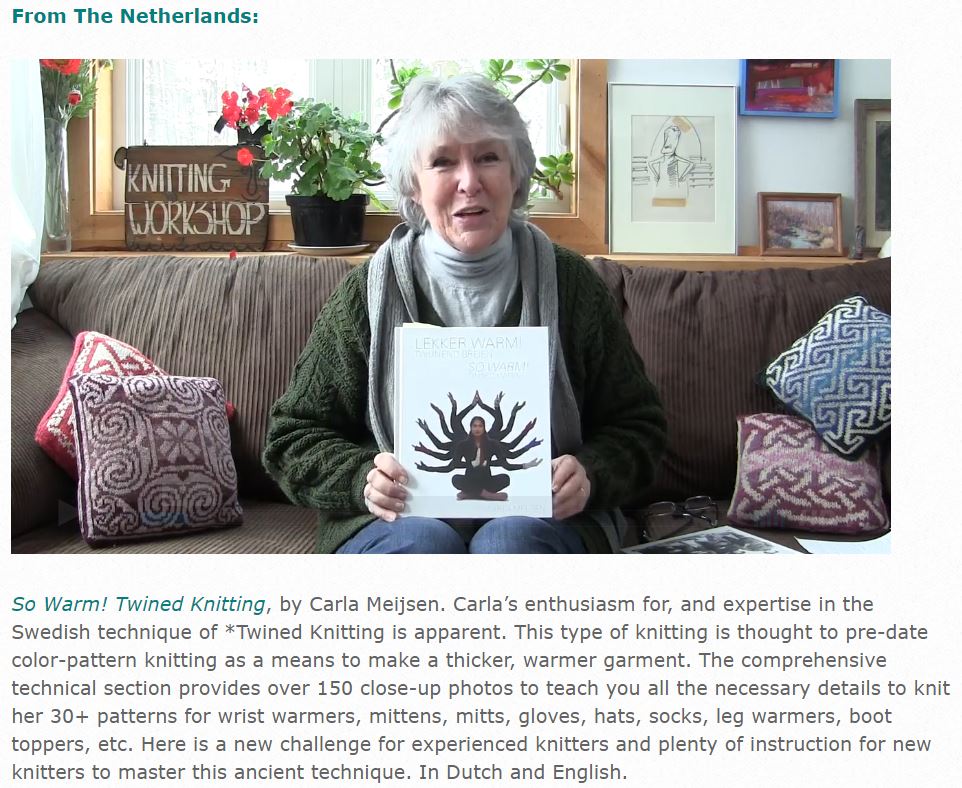
Ik ging er helemaal van blozen… Meg Swansen, dochter van Elizabeth Zimmermann en eigenaar van Schoolhouse Press, heeft al sinds begin 2015 mijn boek Lekker Warm! Twijnend Breien in haar collectie. Dat is al leuk, maar dat ze het bespreekt op haar blog is helemaal geweldig. Dank je wel Meg!
I must have been blushing when I saw this… Meg Swansen, daughter of Elizabeth Zimmermann and owner of Schoolhouse Press, has had since early 2015 my book So Warm! Twined Knitting in her collection. That of course is nice, but that she discusses in her blog is totally awesome. Thanks Meg!
Posted in Books - Magazines, Knitting, Knitting Techniques, The Dutch Knitters, Traditional Knitting, Twined Knitting, Vintage Knitting | 1 Comment »
December 7th, 2016
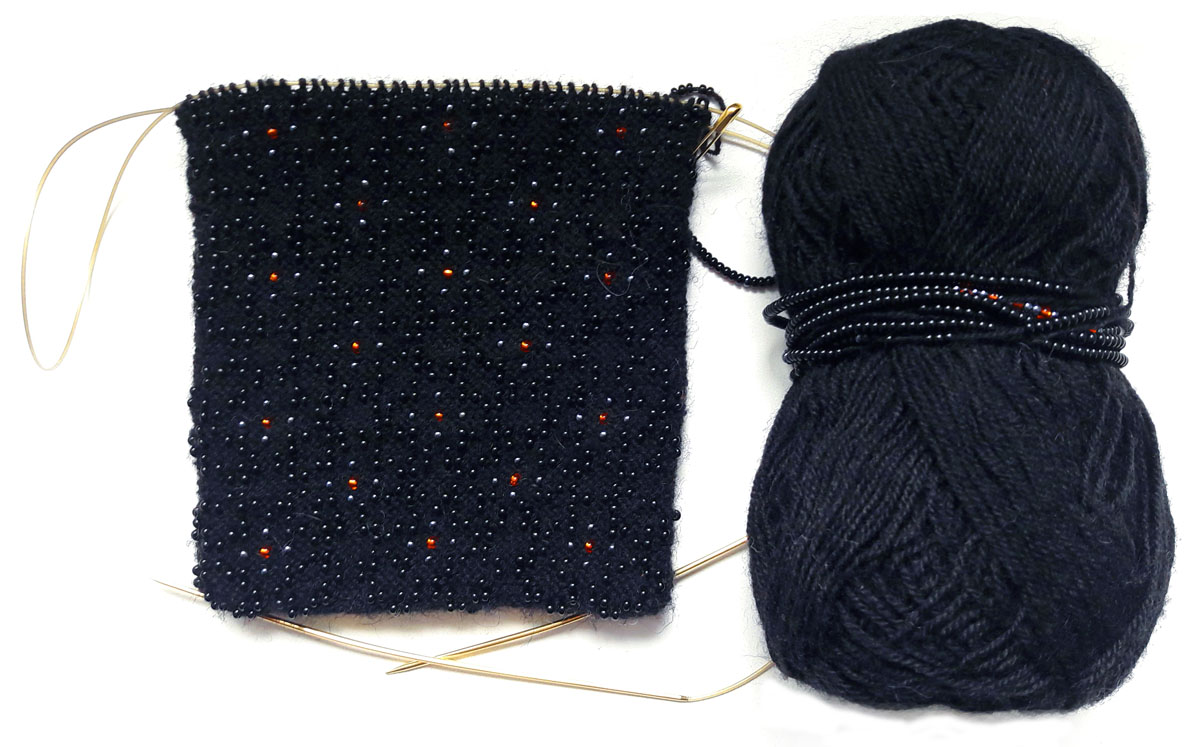
Een aantal klussen zijn geklaard, vink, vink, vink,… en dan is het tijd om even iets te doen waar ik al een tijd over dacht. Een zwart kralenbuideltje met bloemetjes met een oranje hartje. Het is het Magisch Motief van mijn naam ‘Carla’. Een mooi karweitje voor de lange donkere winteravonden in december. Na het oprijgen in patroon met drie verschillende kleuren is het eigenlijk een eitje. Kwestie van doorbreien tot de kraaltjes op zijn, dan kom je er wel.
Some jobs are done, check, check, check … and then it’s time to do something I wanted to do for a while. A black beaded pouche decorated with small flowers with an orange heart. It is the Magic Motif for my name ‘Carla’. A nice job for the long dark winter nights in December. After threading in pattern in three different colors the knitting is actually a breeze. Let’s just keep on knitting until all beads are used, I will finally get there.
Posted in Knitting, Knitting Techniques, Projects, Traditional Knitting, Vintage Knitting | No Comments »
November 28th, 2016
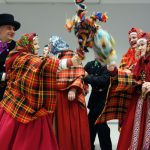 |
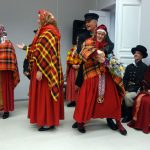 |
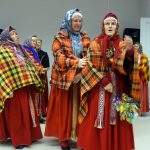 |
| Klik op afbeelding voor vergroting – Click to enlarge images |
Eén van de dorpjes in Letland dat de diepste indruk op mij heeft gemaakt en waar mijn breivrienden en ik inmiddels al twee keer hartelijk zijn ontvangen, is het katholieke Alsunga in de provincie Kurzeme (Koerland). We bewonderden er de kleurrijke kousen en polswarmers, gaven een workshop, genoten van de zang, we werden er in 2015 en 2016 in het traditionele kostuum gehesen en leerden er Sklandrauši (worteltaartjes) bakken. Het was dan ook geweldig om een aantal van deze mensen terug te zien aan het eind van de conferentie in het National History Museum in Riga. En hoe,… het hele dorp leek er wel te zijn, iedereen in de kleding van Alsunga, compleet met kousen, kroontjes, mutsjes, kralenpolsjes en een bruidskist meeslepend of onder de arm oude instrumenten, zoals doedelzakken van bont en leer. En wat een show maakten ze ervan! Niet alleen zang, dans en muziek, maar ook een toneelstuk waarin een vrouw van meisje tot bruid werd omgekleed onder luid geroep, gezang en zelfs geknok met textiele knotsen van de omstandstanders. Wat een kracht gaat er uit van zo’n groep mensen die met hartstocht en liefde zich bijna verliezen in hun spel. En daar zat ik zomaar bij op de eerste rij, knipogend naar de vrouwen die ik al kende.
Maar het leukste kwam nog. Na het optreden ontstond er, aangemoedigd door een glaasje Black Balsam, een spontaan feestje op de gang in het museum. Ze konden gewoon niet stoppen met zingen en spelen, dus ondanks de beperkte ruimte gingen al snel de voetjes van de vloer. Zelfs ik werd ten dans gevraagd, maar dat dit voetenwerk ging me ver boven de pet. Maar ik genoot van alles, jong en oud, allemaal in hun prachtige kleding en ze hadden er zin in. Kippenvel, want je weet, echter en authentieker dan zo kan het niet worden. Na verloop van tijd stopte de groep en vertrokken ze, nog steeds in hun klederdracht, naar de bus die hen terug bracht naar Alsunga. Bedankt en tot ziens!
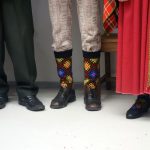 |
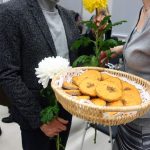 |
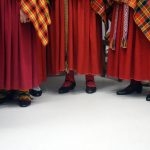 |
| Klik op afbeelding voor vergroting – Click to enlarge images |
One of the villages in Latvia that made the deepest impression on me and where my knitting friends and I were already twice received with a warm welcome, is the the Catholic village Alsunga in the region Kurzeme. We admired the colorful socks and wrist warmers, gave a workshop, enjoyed the singing, were dressed up in 2015 and 2016 in the traditional costume and learned how to back Sklandrauši (carrot cakes). It was so great to see some of these people again at the end of the conference at the National History Museum in Riga. And not just that… the whole town seemed to be there, everyone in the clothing of Alsunga, complete with stockings, crowns, hats, beaded wrist warmers and towing a bridal chest or having an ancient instrument such as bagpipe of fur and leather under the arm. And they really know how to make a real show of it! Not only singing, dancing and music, but also a play in which a girl is transformed into a bride by changing clothes, all done by the other women and men with loud voices, singing and even fake fighting with textile clubs. You can feel the power that such a group of people has, when they are almost lost in their play they perform with so much passion and love. And there I was just in the front row, winking at the women I knew.
But the best was yet to come. Encouraged by a glass of Black Balsam, there was a spontaneous party in the hallway of the museum. They just could not stop singing and playing, so despite the limited space there were soon a few dancing couples at the dance floor. Even I was asked to dance, but such rhithmic footwork was far beyond my capacities. But I enjoyed it all so much, young and old, all in their beautiful clothes and it was obvious they loved to sing and dance. Goosebumps all over, because I knew, his is as real and authentic as it ever will be. Over time, the group stopped and they left, still in their traditional costumes, to the bus that brought them back to Alsunga. Thank you and goodbye!
Posted in Knitting, Knitting journeys, Latvia - Letland, Socks, Traditional Knitting, Vintage Knitting | No Comments »
November 22nd, 2016
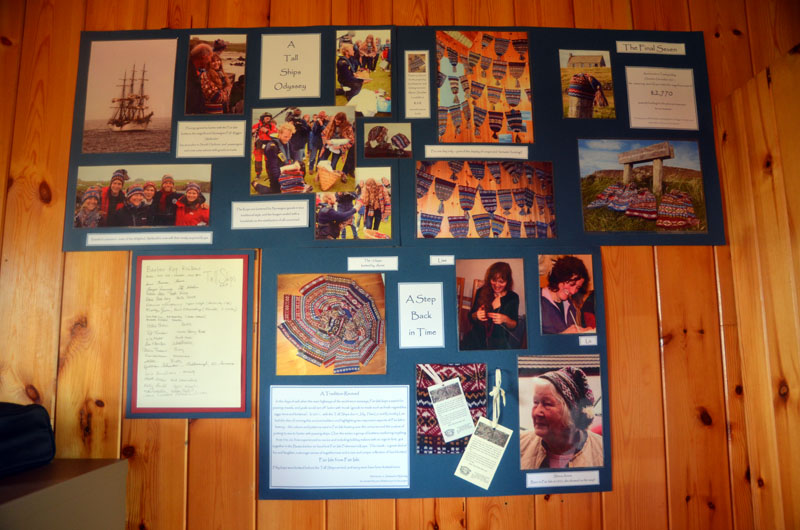
Afgelopen zaterdag, 19 november, was het International Fair Isle Kep Day. Toen ik twee jaar geleden in het musuem in Fair Isle was wees curator Anne Sinclair me op een prikbord vol met foto’s van mutsen die het jaar ervoor waren gebreid, onder meer door de breiers op het eiland. Een geweldig project, waar je nog steeds bij aan kan sluiten, kijk maar eens op hun Facebook-pagina. Destijds kocht ik in het George Waterston Museum natuurlijk ook het patroonboekje van de muts, waarvan ik de motieven verwerkt heb in één van de werkstukken voor het behalen van de TKGA-titel Master Knitter. Tja, wie zou er niet geïnspireerd raken op dat prachtige eiland, waar het prachtige Fair Isle-breiwerk zijn oorsprong vond. Hoog tijd om weer eens terug te gaan naar dat mooie plekje!
Last Saturday, 19 November, it was the International Fair Isle Kep Day. Two years ago when I was in the musuem in Fair Isle curator Anne Sinclair showed me a bulletin board filled with photos of caps that year were knitted by the knitters of the island and other places. A great project, where you still can join in, just look at their Facebook page. When I was on Fair Isle I also bought the pattern book of the hat at the George Waterston Museum, of which I incorporated the motifs in one of the workpieces to achieve the TKGA-titel Master Knitte. Well, who would not get inspired at that beautiful island, where the gorgeous Fair Isle knitting originated. High time to go back again to that beautiful place!
Posted in Books - Magazines, Great Britain - Groot Britannië, Knitting, Knitting journeys, Knitting Techniques, Projects, Traditional Knitting, Vintage Knitting | No Comments »


